Herbs in Italian cooking have been used since ancient times. From the aromatic basil in traditional dishes to the rosemary and oregano that Italian cooks, these fresh herbs define the flavor profiles of Italian cuisine. While many grocery stores offer these herbs in dried form, nothing compares to using fresh, vibrant herbs to create your own seasoning blends, like homemade Italian seasoning, ensuring that Italian food remains true to its rich heritage.
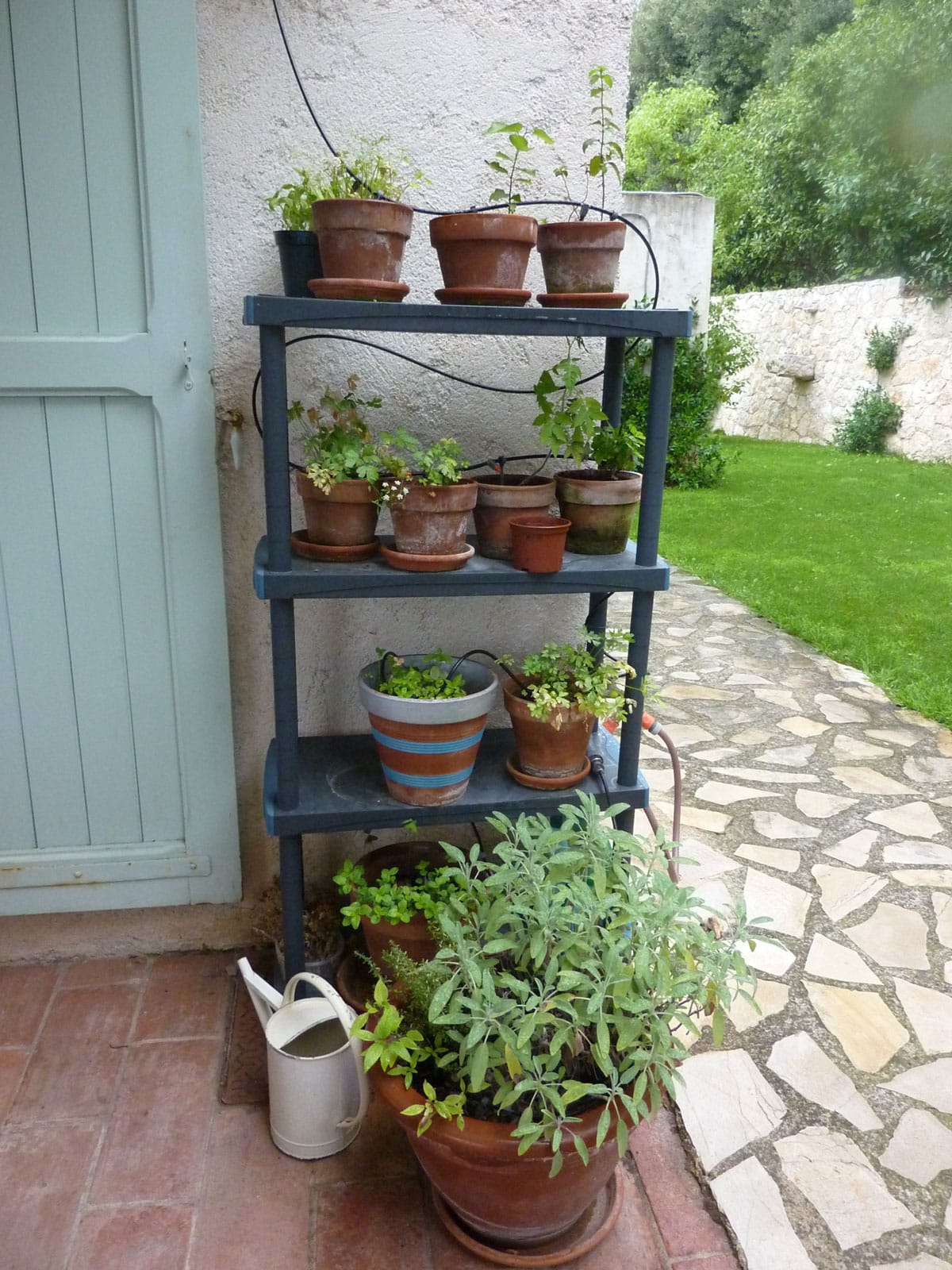
I have always wanted a personal garden but faced challenges; now, "Click and Grow" offers a self-sustaining kitchen garden.
I am trying it this September; come back to see the results.
Jump to:
Italian cuisine, known for its rich flavors, heavily relies on fresh herbs and spices to enhance its dishes.
Rooted in tradition yet always open to subtle innovations, Italian chefs and home cooks alike have long recognized the power of fresh ingredients to infuse their culinary creations with vibrant flavors and aromas.
From the aromatic basil in a classic pesto Genovese, the fragrant rosemary gracing roasted meats, to the pungent kick of fresh garlic in aglio e olio pasta, these herbs, and spices are more than mere garnish; they are the essence of Italian cooking.
Drawing from the country's diverse geography, each region has its unique palette of herbs and spices, making Italian cuisine a vast tapestry of flavors, bound together by a shared respect for the natural bounty of the land.
In this article, you will find a list of the essential herbs used in authentic Italian cuisine and how to integrate them into your cooking.
By the end of this article, to pick your curiosity, there's a section detailing how herbs and spices were utilized in Italy during the Roman, Medieval, and Renaissance periods.
For more information about Italian cuisine history, tradition, and culture, you can read: 77 traditional Italian ingredients and best brands, history of traditional Italian food by region, 32 most popular Italian street food, 22 Italian breakfast recipes, Italian Sunday dinner a 6 meal courses, Italian table setting and etiquette

Italian herbs and spices in its regions
Italian cuisine, revered globally, owes its iconic flavors to the fusion of fresh herbs and spices native to the country's diverse landscapes.
The nuances in the cuisine can be attributed to the varied climates and terrains of Italy's regions, each boasting its unique culinary traditions and aromatic ingredients.
In Northern Italy, especially in Liguria, basil stands out as an essential herb, primarily used in making pesto.
Like Piedmont and Lombardy, the northern areas frequently incorporate rosemary in roasts and stews.
With their distinct flavor, Juniper berries are chosen for game dishes and various meat preparations, while bay leaves find their way into broths and sauces.
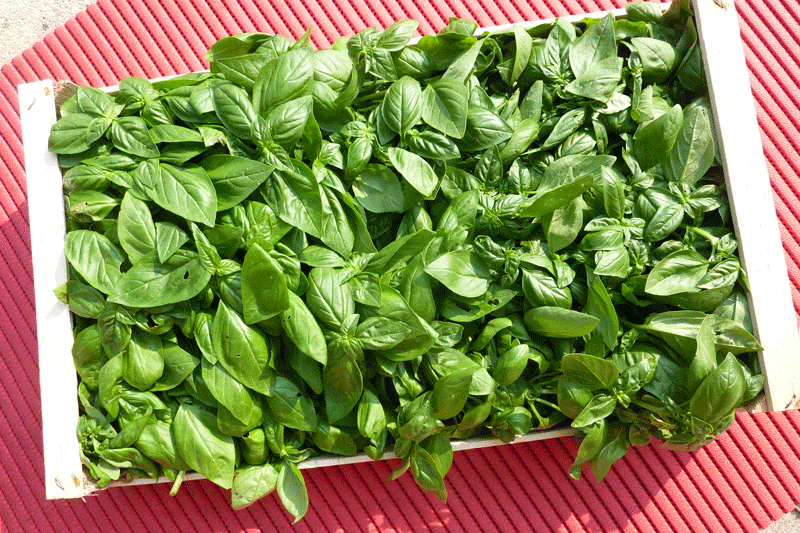
Journeying through Central Italy, encompassing Tuscany, Umbria, and Lazio, one encounters the robust flavors of sage, often paired with butter for pasta dishes or used with meats.
Garlic is ubiquitous, especially in Tuscan dishes, infusing them with its potent flavor.
In regions like Abruzzo, the spicy touch of chili pepper enlivens many traditional recipes.
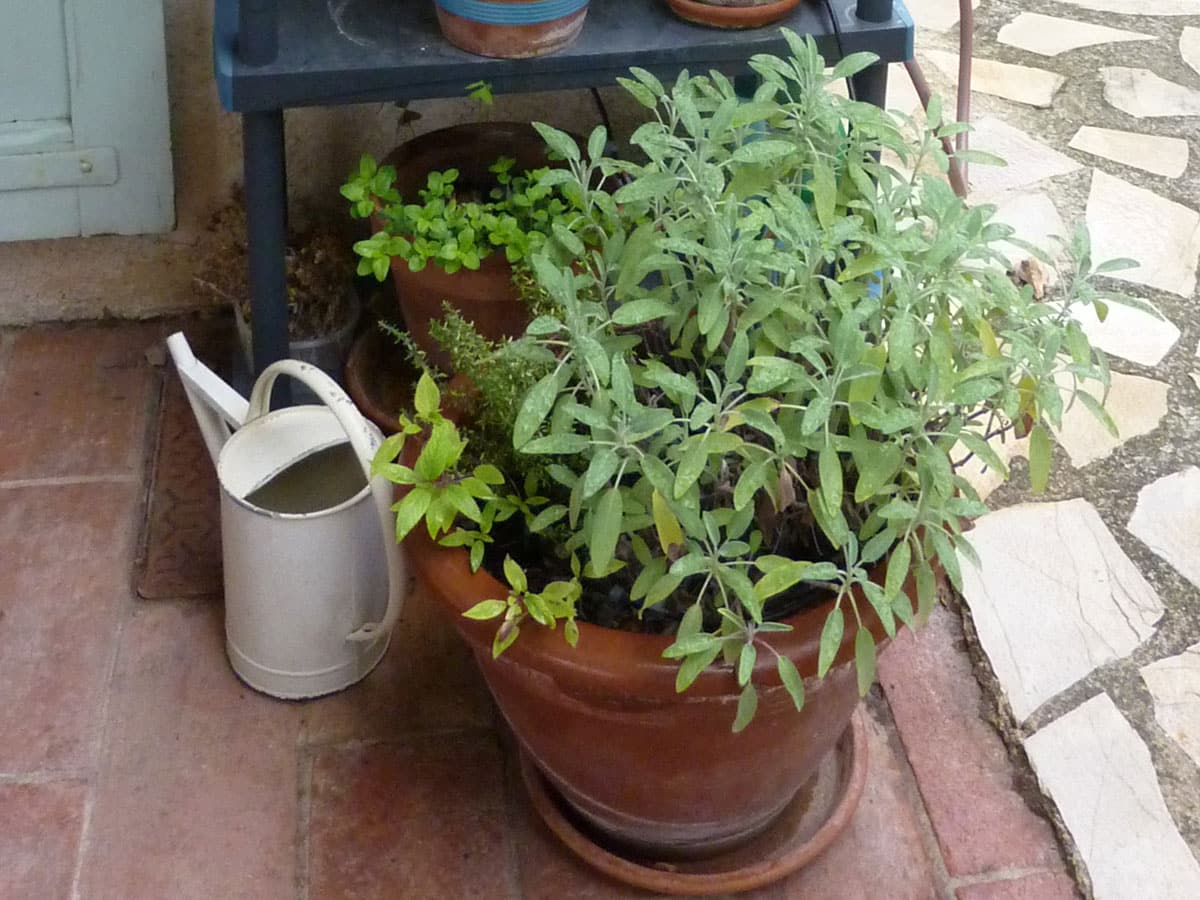
Southern Italy, which includes Calabria, Sicily, Campania, and Apulia, is redolent with the scent of oregano, predominantly sprinkled on pizzas and added to pasta sauces.
Mint is another popular herb in this region, especially in Sicilian lamb dishes.
The unique taste of fennel seeds is incorporated into sausages and various meat dishes, particularly in Sicily.
And of course, capers, with their tangy flavor, are a recurrent ingredient in numerous Sicilian recipes and salads.
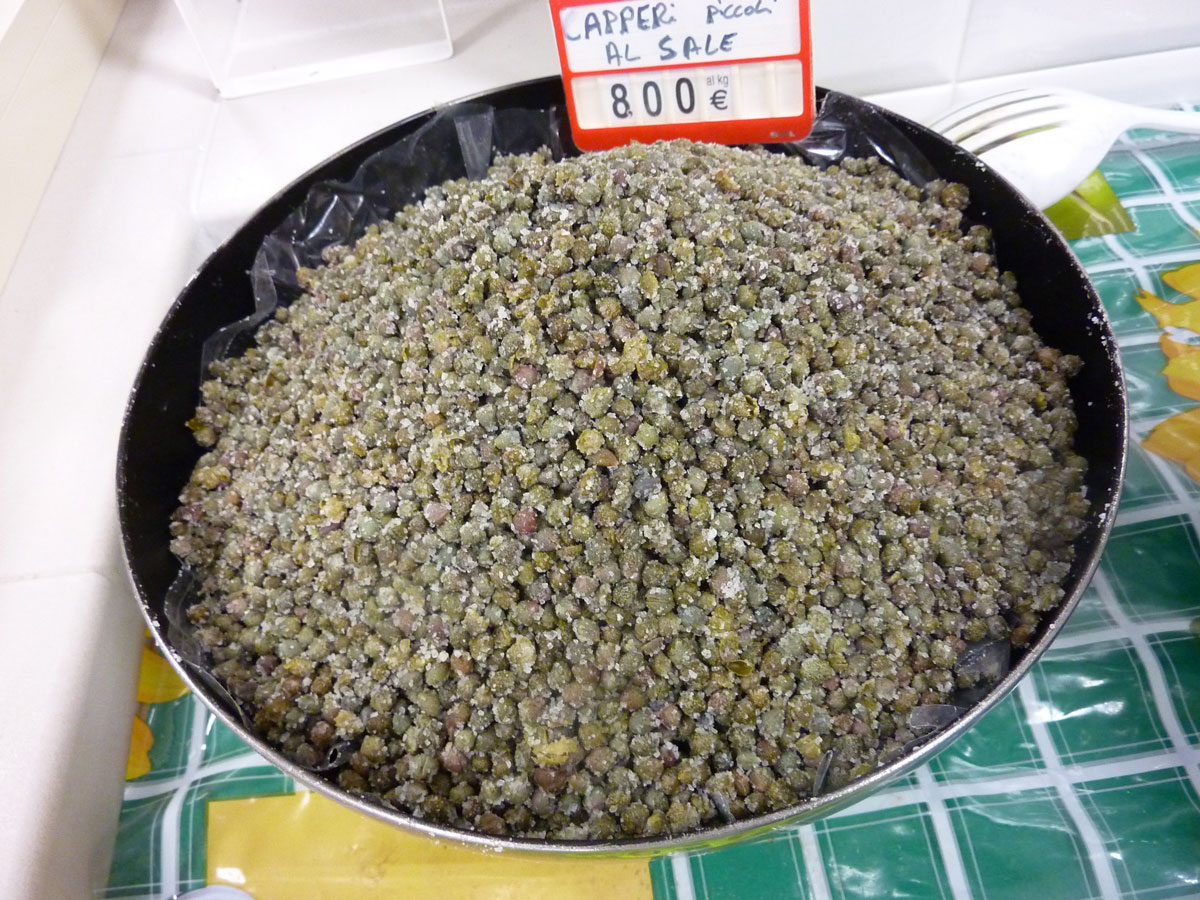
On the islands of Sardinia and Corsica, the fragrant myrtle is a standout.
It's used both for its leaves and berries in cooking and as the core ingredient in a local liqueur.
Sardinia also takes pride in its high-quality saffron, which lends its golden hue and subtle flavor to many traditional island dishes.
Over on the Adriatic coast in Eastern Italy, parsley is a frequent addition, enhancing the taste of seafood dishes.
The sweet scent of anise permeates bread, desserts, and liqueurs in this region.
However, some flavors and ingredients are universally Italian.
Black pepper is a universally loved seasoning, and though parmesan cheese is technically a cheese, its rich umami quality often functions as a seasoning in pasta and various other dishes.
It's worth noting that the richness of Italian cuisine stems from its incredible diversity.
Each village, town, and city has its unique spin on traditional dishes, influenced by locally grown herbs and spices, weaving a vast tapestry of gastronomic delights throughout the nation.

List of Italian herbs and spices
1. Angelica (Angelica):
Flavor Profile: Angelica boasts a distinctive taste that can be described as a blend of celery and licorice. It's both sweet and slightly bitter, with an aromatic earthiness.
Pairs Well With: In the context of Italian cuisine, angelica complements citrus flavors, especially in candied forms. Its unique flavor profile also makes it a fitting companion for certain distilled spirits, wines, and digestive liqueurs.
Italian Recipes:
- Candied Angelica: One of the most popular preparations of this herb in Italy is in its candied form. Angelica stems are boiled in sugar syrup until they become translucent and are then used as decorative and flavorful additions to cakes, tarts, and other pastries.
- Digestive Liqueurs: Angelica roots are sometimes used as one of the botanicals in traditional Italian amari (bitter liqueurs) and vermouths. Its flavor complements the other herbs and spices, adding depth and complexity to the drink.
- Stews and Broths: The celery-like characteristics of angelica mean that it can be used in stews and broths, lending a warming, aromatic essence to the dish.
2. Anice (Anise):
Flavor Profile: Anice is a fragrant herb with a distinct anise-like flavor. Its aromatic flavor is characterized by a sweet flavor profile, resembling that of licorice. While it's not as pungent as some spices, it has a bold, unmistakable flavor.
Pairs Well With: As a versatile herb, anice complements a variety of ingredients in Italian cuisine. It pairs beautifully with aromatic herbs, sweet desserts, and certain liqueurs, enhancing their taste with its robust flavor.
Italian Recipes:
- Sambuca: This popular Italian anise-flavored liqueur is often served neat or with a few coffee beans. Its sweet flavor and aromatic profile come primarily from anice.
- Pizzelle: Traditional Italian waffle cookies sometimes flavored with anise. Their sweet flavor and delicate texture contrast wonderfully with the stronger flavor of anise.
- Biscotti all’Anice: These are Italian biscuits flavored with anice. Their aromatic flavor and crunchy texture make them a favorite accompaniment to coffee or dessert wines.
- Taralli al Finocchio: Ring-shaped Italian breadstick snacks sometimes use anise seeds (finocchio is fennel in Italian, but anise and fennel have similar flavor profiles). The bold flavor of anice imparts an aromatic twist to these savory bites.
- Liquore Strega: A herbal liqueur from Italy, which among its many botanicals, includes a hint of anice, giving it a sweet flavor with a touch of that characteristic anise-like aroma.
3. Basil (Basilico):
Flavor Profile: Basil is a fragrant herb with a sweet, peppery, and slightly minty essence. It's a quintessential ingredient in Italian cuisine and adds fresh flavor to dishes.
Pairs Well With: In Italian cuisine, fresh basil pairs seamlessly with tomatoes, mozzarella, olive oil, garlic, lemon, and various cheeses. Its aromatic nature complements pasta sauces, salads, and pizzas.
Italian Recipes:
- Pesto alla Genovese: Originating from the Liguria region, this is a sauce made predominantly from basil leaves, blended with garlic, pine nuts, Parmesan cheese, and olive oil.
- Margherita Pizza: A classic and simple pizza topped with tomatoes, fresh mozzarella, basil leaves, and a drizzle of olive oil.
- Caprese Salad: A refreshing salad made of alternating slices of tomatoes and mozzarella, adorned with fresh basil leaves and drizzled with extra virgin olive oil.
- Bruschetta al Pomodoro: Toasted slices of bread topped with a mixture of diced tomatoes, garlic, basil, and olive oil.
- Pasta al Pomodoro: A classic tomato-based pasta sauce where basil is added for an extra layer of flavor.
- Italian breadcrumbs: a mix of flavored breadcrumbs made with fresh basil, garlic and parmesan used in many dishes
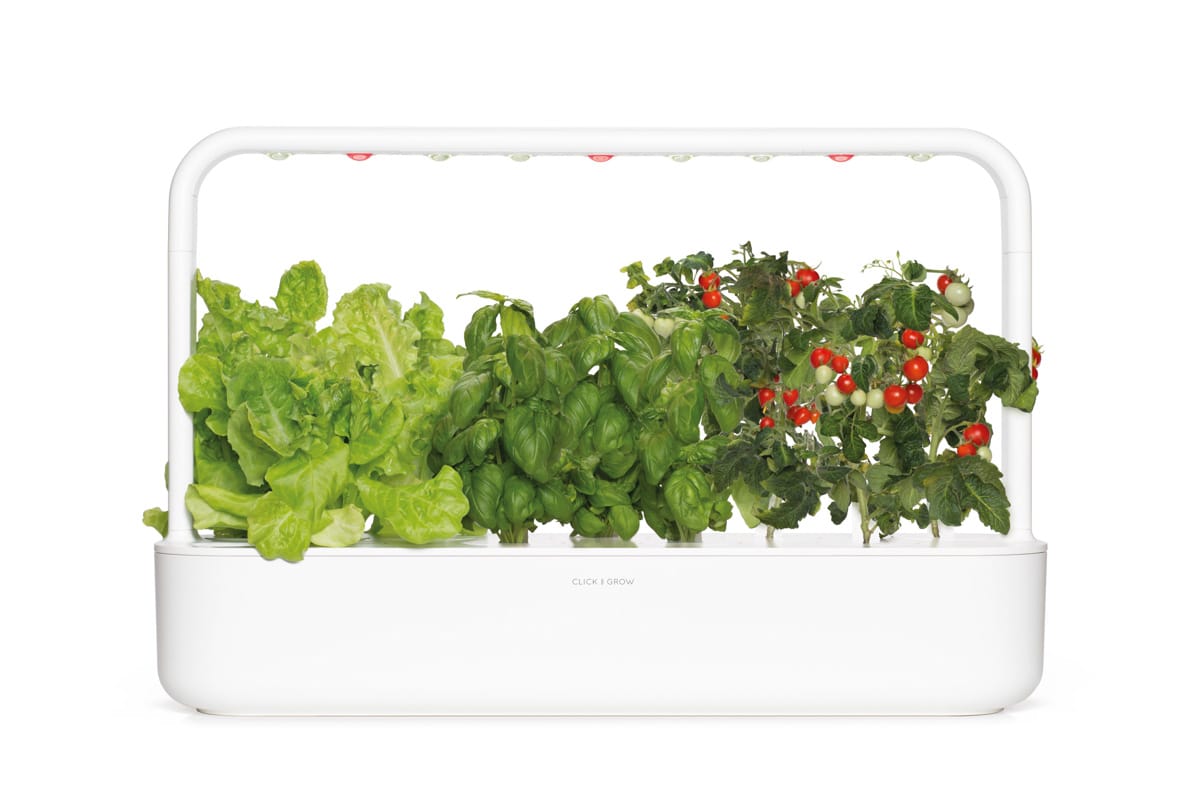
4. Bay Leaf:
Flavor Profile: Bay leaf, often used in its dried form, is a fragrant herb with a distinct and complex flavor profile. It has an earthy flavor with subtle hints of sweet flavor and floral undertones. While not pungent, its aromatic flavor is robust and can influence a dish even when used sparingly.
Pairs Well With: Bay leaf is a versatile herb that blends harmoniously with other aromatic herbs. It complements a wide range of ingredients, from meats to vegetables, and is often used in combination with herbs like rosemary, sage, and thyme. Its robust flavor profile enhances sauces, broths, and stews, providing depth without overpowering.
Italian Recipes:
- Osso Buco: A traditional Italian dish made of braised veal shanks. Bay leaves are often added to the braising liquid, lending an aromatic flavor to the rich sauce that accompanies the meat.
- Minestrone: This classic Italian soup, teeming with vegetables and sometimes pasta or rice, often includes bay leaves as one of the aromatic herbs, infusing the broth with its earthy flavor.
- Ragu alla Bolognese: A meat-based sauce originating from Bologna. Bay leaf, in combination with other aromatic herbs, adds depth to the sauce, enriching its flavors.
- Pollo in Potacchio: An Italian braised chicken dish where chicken pieces are simmered in a tomato-based sauce. A bay leaf is often added to enhance the sauce with its bold flavor.
- Fagioli all'Uccelletto: A Tuscan bean dish where white beans are simmered with garlic, sage, and tomatoes. A bay leaf can be added to lend an additional layer of aromatic flavor.

5. Black Pepper:
Flavor Profile: Black pepper is a fragrant herb (though technically it's a spice) with a bold and pungent flavor. Its primary characteristic is its peppery flavor, which can be accompanied by a slight earthy flavor and a hint of a bitter taste. When freshly ground, its aromatic flavor is more pronounced, delivering a stronger flavor than when it's pre-ground.
Pairs Well With: Black pepper is arguably one of the most versatile herbs/spices in the culinary world. It complements nearly every savory dish and even some sweet ones. Italian cuisine pairs harmoniously with various aromatic herbs, cheeses, meats, vegetables, and sauces. Its robust flavor profile enhances and balances the taste of countless dishes.
Italian Recipes:
- Cacio e Pepe: A minimalist Roman pasta dish celebrating black pepper's power. Made with pecorino cheese and a generous amount of freshly cracked black pepper, it's a testament to the spice's bold flavor.
- Carbonara: Another Roman classic, this creamy pasta dish often requires a good sprinkle of freshly ground black pepper to contrast the richness of the egg and cheese sauce.
- Osso Buco: This Milanese specialty of braised veal shanks is often finished with a sprinkle of black pepper, enhancing the dish's rich, meaty flavors.
- Bruschetta: Grilled bread topped with various toppings, from tomatoes to beans, often benefits from a dash of black pepper to enhance its flavors.
- Minestrone Soup: This hearty vegetable soup, infused with aromatic herbs and sometimes pasta or beans, often includes black pepper to add depth and a hint of heat to its flavor profile.
6. Borage (Borragine):
Flavor Profile: Borage is a versatile herb known for its unique flavor profiles that hint at a mix between a sweet flavor, reminiscent of cucumber, and a slight peppery flavor. It does not have an overwhelming taste but instead brings a mild and aromatic flavor to dishes.
Pairs Well With: Borage is a versatile herb that is complementary to many ingredients used in Italian cuisine. Its subtle, aromatic flavor pairs well with pasta, ricotta cheese, and some aromatic herbs, adding depth without overpowering the dish.
Italian Recipes:
- Tortelli di Borragine: A traditional Ligurian stuffed pasta dish, where tortelli are filled with a mixture of borage, ricotta cheese, and sometimes other herbs. The sweet flavor of borage and ricotta's creaminess creates a delicate and aromatic filling.
- Minestra di Borragine: A borage soup, often made with potatoes and sometimes with the addition of beans. The earthy flavor of the vegetables combines well with the aromatic flavor of borage.
- Frittata con Borragine: A simple Italian omelette infused with fresh borage leaves. Borage adds a unique aromatic flavor, giving the frittata an extra layer of depth.
- Borage and Potato Gnocchi: Sometimes, borage leaves are blended into gnocchi dough, giving it a subtle aromatic flavor and a distinctive green hue.
- Pansotti with Walnut Sauce: A stuffed pasta from Liguria that often includes borage as one of the filling ingredients, usually combined with ricotta and other herbs, and served with a rich walnut sauce.
7. Capers:
Flavor Profile: Capers are known for their bold flavor which is primarily pungent and salty, with hints of a peppery flavor. They are buds that, when pickled, exhibit a tangy zestiness, and may also have a slight bitter taste.
Pairs Well With: Capers are versatile in Italian cooking, often paired with various proteins like fish and chicken. Their robust flavor complements and balances the richness of dishes, and they also pair harmoniously with aromatic herbs such as rosemary, oregano, and thyme.
Italian Recipes:
- Chicken Piccata: A dish that is flavored with lemon and capers, providing a tangy contrast to the succulent chicken. The bold flavor of the capers highlights the dish's zestiness.
- Spaghetti alla Puttanesca: This is a classic Italian pasta dish made with tomatoes, anchovies, olives, chili, and of course, capers. The pungent flavor of capers adds depth and a unique taste to the sauce.
- Vitello Tonnato: A traditional Piedmontese dish where slices of veal are covered in a creamy tuna-caper sauce. The capers bring a robust flavor, cutting through the richness of the sauce.
- Swordfish with Capers and Lemon: The strong flavor of swordfish is complemented and balanced by the zesty combination of lemon and the pungent flavor of capers.
- Caponata: A Sicilian eggplant dish that has sweet and sour flavors, with capers adding their distinctive bold taste to the mix.

8. Chili Pepper (peperoncino piccante):
Flavor Profile: When introduced to dishes, Chili pepper offers a bold flavor characterized by its pungent flavor. Depending on the variety, it can range from a mild peppery flavor to a robust and fiery taste. Some chilies may also have undertones of a sweet flavor or an earthy flavor.
Pairs Well With: Chili pepper, as a versatile element in cooking, can elevate many dishes with its stronger flavor. It pairs harmoniously with various aromatic herbs and is frequently used to provide a kick to sauces, meats, and pastas, highlighting the dish's main ingredients with its pungent, spicy notes.
Italian Recipes:
- Penne all'Arrabbiata: A classic Italian pasta dish known for its spicy tomato sauce. The bold flavor of chili pepper intertwines with the sweetness of tomatoes, offering a delightful contrast.
- Aglio, Olio e Peperoncino: A simple yet flavorful pasta dish made with garlic, olive oil, and chili peppers. The pungent flavor of the chili perfectly complements the aromatic flavor of garlic.
- Calabrian Chili Paste (Bombardino): Originating from Calabria, this spicy paste boasts a robust flavor and is used to enhance various dishes, from pasta to grilled meats.
- Nduja: Nduja is a spicy, spreadable pork salumi originating from Calabria, Italy, known for its fiery flavor and soft, almost creamy consistency.
- Salsiccia e Peperoncini: Italian sausages cooked with a mix of aromatic herbs and chili peppers, emphasizing the meat's flavors with a peppery kick.
- Brodetto di Pesce con Peperoncino: A spicy fish stew where the chili pepper's strong flavor enhances the richness of the seafood broth
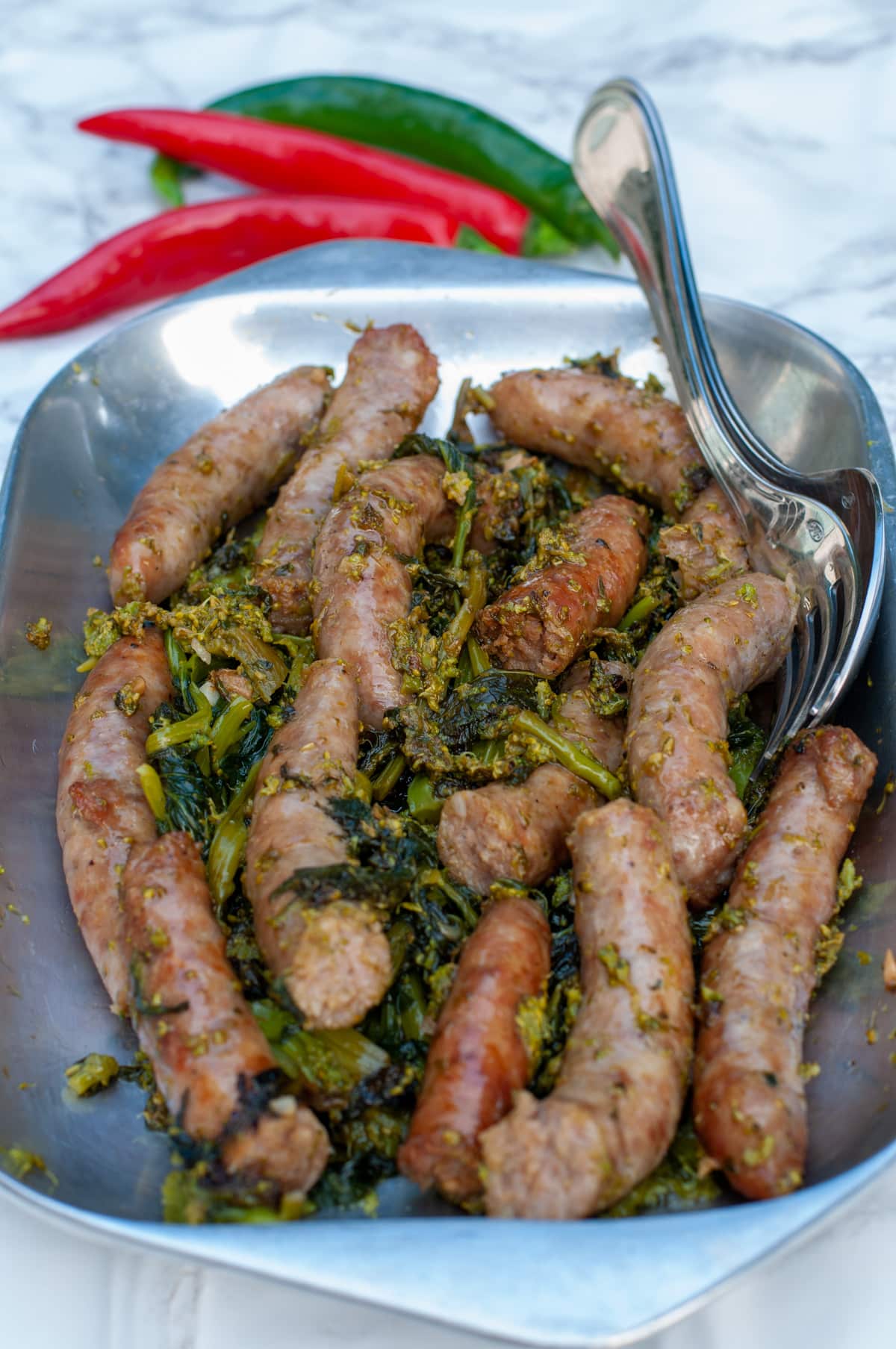
9. Cinnamon (Cannella):
Flavor Profile: Cinnamon boasts a sweet flavor with warm, aromatic flavor undertones. It's a fragrant herb that is distinguished by its stronger flavor, which can be both robust and slightly earthy.
Pairs Well With: Cinnamon is versatile in cooking and baking, often pairing splendidly with sweet dishes due to its aromatic and sweet flavor. In the context of Italian cuisine, it complements a variety of ingredients ranging from fruits to meats, and even some aromatic herbs, giving depth and warmth to dishes.
Italian Recipes:
- Tiramisu: Some variations of this classic Italian dessert incorporate a sprinkle of cinnamon to enrich the flavor profiles, adding an aromatic flavor that complements the coffee and mascarpone layers.
- Ricotta e Cannella Gelato: A popular gelato flavor where ricotta's creaminess pairs harmoniously with cinnamon's sweet flavor.
- Caponata: This Sicilian eggplant dish sometimes includes a touch of cinnamon, adding a unique depth and aromatic taste that contrasts with the other savory and sweet elements.
- Pasta con Salsiccia e Cannella: A pasta dish where sausage is flavored with a hint of cinnamon, bringing an unexpected but delightful aromatic twist to the sauce.
- Mostarda: An Italian condiment served with boiled meat made of candied fruit and a mustard-flavored syrup, sometimes infused with cinnamon for an added layer of flavor.
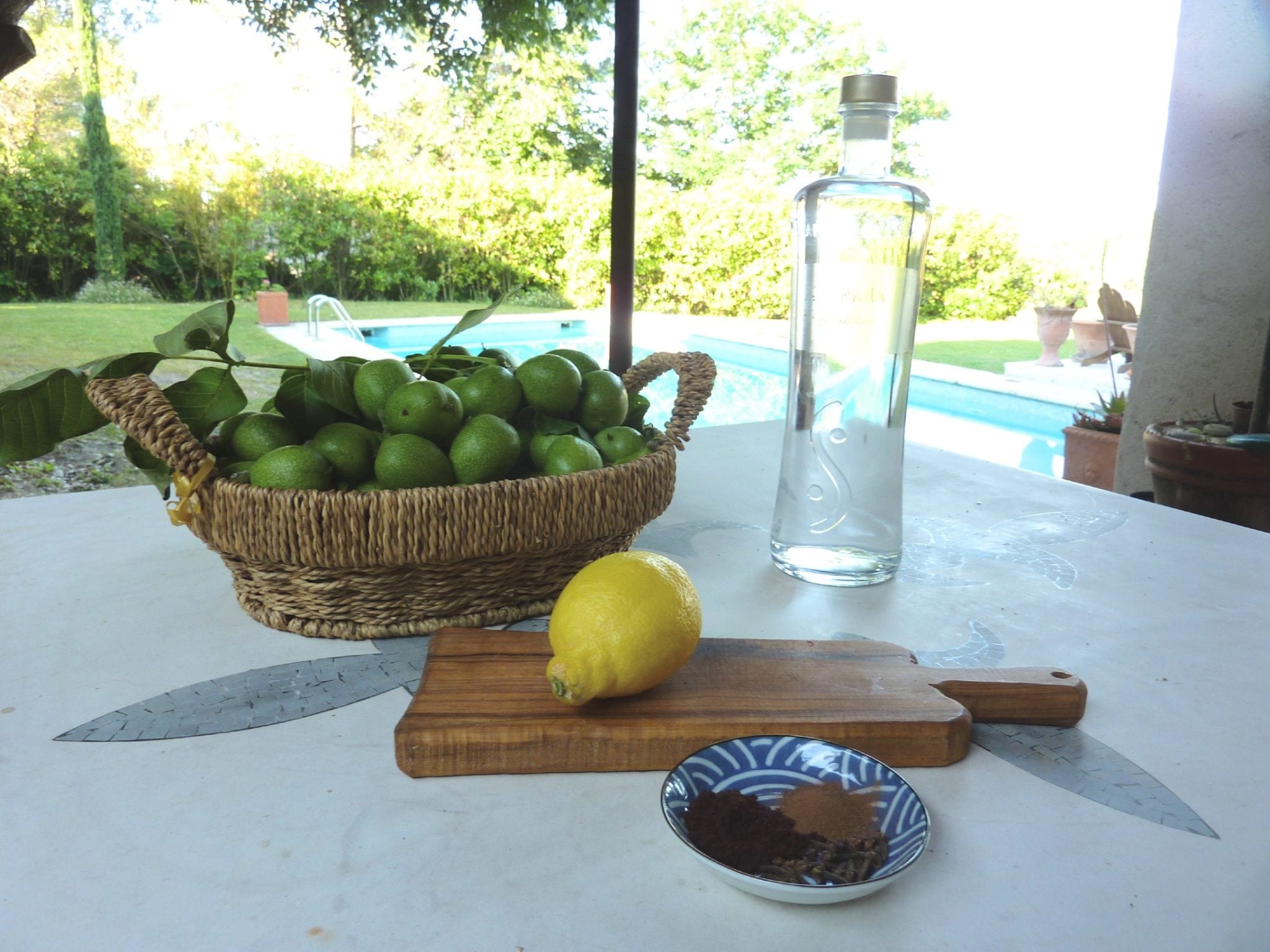
10. Clove (Chiodi di Garofano):
Flavor Profile: Clove is characterized by its bold and robust flavor. It’s an aromatic herb with a pungent flavor that tends towards a bitter taste, yet it also carries a hint of sweet flavor, making it uniquely complex.
Pairs Well With: As a fragrant herb, clove pairs wonderfully with various ingredients, enhancing both sweet and savory dishes. Its strong flavor complements meats, wines, and aromatic herbs, imbuing dishes with its signature aromatic depth.
Italian Recipes:
- Vin Brulé: An Italian version of mulled wine, often spiced with cloves to bring out a warm, aromatic flavor, perfect for cold evenings.
- Cotechino con Lenticchie: A traditional New Year's pork sausage and lentils dish. Occasionally, cloves are added to enhance the meat's flavor with their pungent and aromatic nuances.
- Mostarda di Cremona: This condiment made of candied fruit and mustard syrup sometimes incorporates cloves to intensify its flavor profiles, adding depth and warmth.
- Amaretti Cookies: Some variations of these almond-based cookies include cloves, offering a sweet flavor with an aromatic kick, perfect for pairing with coffee.
- Agnello Brasato (Braised Lamb): In certain regional recipes, lamb is braised with wine, aromatic herbs, and cloves, which add a robust and fragrant depth to the meat.
11. Coriander (Coriandolo):
Flavor Profile: Coriander has a flavor that can be both sweet and earthy. The seeds have an aromatic flavor with subtle citrus notes, while the fresh leaves can sometimes lean towards a bitter taste, with a hint of peppery flavor. It's a fragrant herb, known for its versatility in various cuisines.
Pairs Well With: Coriander, being a versatile herb, complements a wide range of ingredients. Whether it's in seed form or as fresh cilantro leaves, its aromatic qualities mesh seamlessly with other aromatic herbs, and its earthy flavor complements meats, vegetables, and legumes.
Italian Recipes:
- Salsiccia e Fagioli (Sausage and Beans): Some regional variations of this dish incorporate coriander seeds to give an aromatic flavor and earthy depth to the meat and beans.
- Liquore al Coriandolo: An Italian homemade liquor infused with coriander seeds, where the sweet flavor of the seeds shines through and enhances the drink's aroma.
- Zuppa di Lenticchie (Lentil Soup): In certain Italian regions, lentil soups might be seasoned with coriander seeds to provide an aromatic and earthy flavor profile.
- Insalata Mediterranea (Mediterranean Salad): Some modern Italian salads incorporate fresh coriander leaves, adding a fragrant herb note with a slightly peppery kick.
- Panzanella con Coriandolo: A twist on the traditional bread salad where fresh coriander leaves are added to give a burst of aromatic flavor and freshness.
12. Dill (Aneto):
Flavor Profile: Dill has a distinct aromatic flavor that's somewhat reminiscent of an anise-like flavor, but with grassy and slightly bitter undertones. It is a fragrant herb that is both fresh and pungent in taste.
Pairs Well With: This versatile herb is wonderful with a variety of dishes. Its aromatic and slightly bitter taste complements fish particularly well, but it also harmonizes beautifully with potatoes, salads, and certain legumes. Being a fragrant herb, it pairs efficiently with other aromatic herbs, adding depth to dishes.
Italian Recipes:
- Insalata di Patate e Aneto (Potato and Dill Salad): A refreshing salad where the earthy flavor of potatoes marries well with the aromatic presence of dill.
- Salmone con Aneto (Salmon with Dill): Dill's aromatic flavor complements the fatty richness of salmon, giving it a refreshing taste.
- Frittata con Aneto e Caprino (Dill and Goat Cheese Frittata): The combination of creamy goat cheese and fragrant dill provides a bold flavor profile to this classic egg dish.
- Zuppa di Piselli e Aneto (Pea and Dill Soup): The sweetness of peas combined with the aromatic and slightly bitter taste of dill makes for a harmonious soup.
- Pasta Fredda con Aneto e Zucchine (Cold Pasta with Dill and Zucchini): In this summer dish, the fresh taste of zucchini is enhanced by the pungent flavor of dill, creating a refreshing meal.
13. Fennel Seeds (Semi di Finocchio):
Flavor Profile: Fennel seeds are celebrated for their sweet and aromatic flavor, which resembles an anise-like flavor. These seeds possess a fragrant herb quality, with nuances of a stronger flavor that can be both earthy and slightly peppery.
Pairs Well With: As a versatile herb in its seed form, fennel seeds blend harmoniously with a multitude of dishes. Their aromatic flavor complements meats, especially pork, and fish, and works well with other aromatic herbs, enhancing overall flavor profiles.
Italian Recipes:
- Salsiccia con Semi di Finocchio (Sausage with Fennel Seeds): Italian sausages often incorporate fennel seeds to impart that signature sweet and aromatic flavor that balances the meat's robust flavor.
- Pane al Finocchio (Fennel Seed Bread): A rustic bread variety where the aromatic flavor of the fennel seeds provides a sweet and fragrant note to every bite.
- Spaghetti con Acciughe e Semi di Finocchio (Spaghetti with Anchovies and Fennel Seeds): The anise-like flavor of fennel seeds contrasts beautifully with the bold flavor of anchovies in this pasta dish.
- Torrone (Italian Nougat): Some versions of this sweet, nougat-like confection use fennel seeds to introduce an aromatic and sweet flavor that complements the honey and nuts.
- Biscotti ai Semi di Finocchio (Fennel Seed Biscuits): These are crunchy biscuits where the sweet flavor of fennel seeds adds an aromatic twist, making them a perfect companion to tea or coffee.
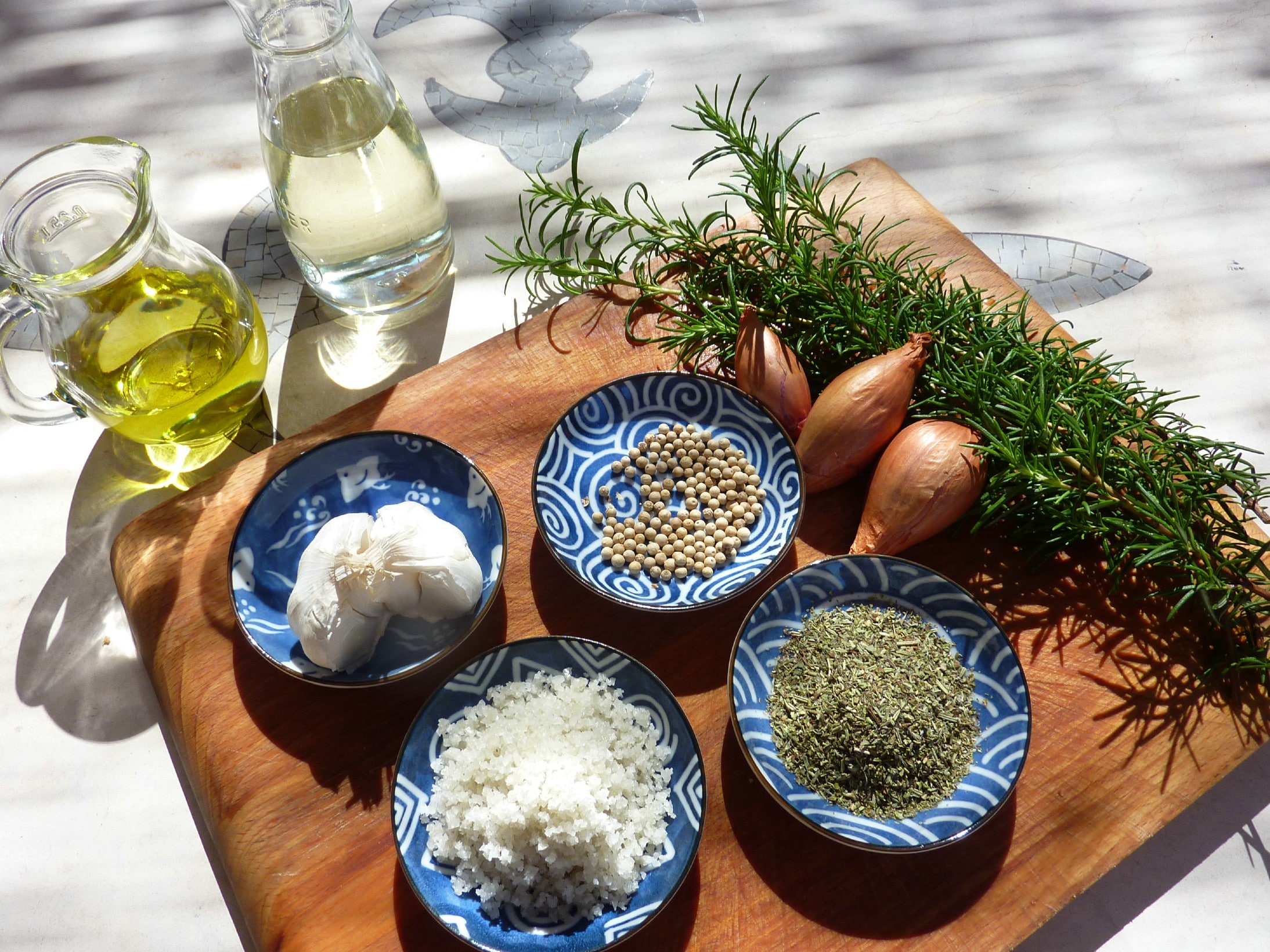
14. Garlic (Aglio):
Flavor Profile: Garlic is renowned for its pungent flavor, which can range from a robust flavor when used raw, to a sweet flavor when roasted or caramelized. This aromatic herb exudes a strong aroma and has an earthy flavor with hints of peppery undertones, especially when fresh.
Pairs Well With: Garlic is a versatile herb in the realm of Italian cooking, pairing harmoniously with a myriad of ingredients. Its aromatic flavor can be combined with various meats, vegetables, pastas, and even seafood. When combined with other aromatic herbs, garlic often amplifies and complements the overall flavor profiles of a dish.
Italian Recipes:
- Spaghetti Aglio e Olio (Spaghetti with Garlic and Oil): A classic pasta dish that champions the bold flavor of garlic by gently sautéing it in olive oil to bring out its aromatic flavor.
- Bruschetta al Pomodoro e Aglio (Tomato and Garlic Bruschetta): Toasted bread topped with a mix of fresh tomatoes, aromatic garlic, and basil – an embodiment of Italian flavors.
- Aglio Arrosto (Roasted Garlic): Roasting garlic transforms its stronger flavor into a sweet, creamy delicacy which can be spread on bread or mixed into dishes.
- Pollo all'Aglio (Garlic Chicken): Chicken pieces seared and then cooked with a generous amount of garlic, ensuring a fragrant herb presence in the dish.
- Bagna Càuda (Warm Garlic and Anchovy Dip): A warm dip made predominantly of garlic and anchovies, showcasing garlic's robust and pungent flavor.
15. Ginger (Zenzero):
Flavor Profile: Ginger is renowned for its aromatic flavor. It offers a pungent flavor with a peppery kick, often accompanied by a hint of sweetness. Ginger can exhibit a robust flavor when used fresh, with undertones that can be described as earthy and slightly bitter.
Pairs Well With: As a versatile herb, ginger finds its place alongside both sweet and savory components. Its aromatic flavor complements fruits, desserts, meats, and even certain seafood dishes. Ginger can be combined with other aromatic herbs and spices to create diverse flavor profiles, amplifying the overall taste of a dish.
Italian Recipes:
- Biscotti allo Zenzero (Ginger Biscuits): These cookies highlight the sweet flavor of ginger, making them aromatic and perfect for pairing with tea or coffee.
- Sorbetto allo Zenzero e Limone (Ginger and Lemon Sorbet): A refreshing sorbet where the pungent flavor of ginger contrasts with the tang of lemon, creating a bold flavor combination.
- Risotto allo Zenzero (Ginger Risotto): Incorporating ginger into risotto introduces an aromatic and peppery twist to this classic creamy dish.
- Pollo allo Zenzero (Ginger Chicken): Chicken is marinated or cooked with ginger to give it a fragrant herb essence with a touch of its earthy flavor.
- Salsa di Zenzero (Ginger Sauce): Often used as a complement to meats or fish, this sauce showcases ginger's robust flavor, providing a pungent kick to dishes.
16. Juniper Berries (bacche di ginepro):
Flavor Profile: Juniper berries are characterized by their robust flavor, which is a blend of sweet, bitter, and earthy notes. They're known for their aromatic flavor, reminiscent of pine and sometimes even have a slight peppery kick. When crushed or cooked, these berries exude a stronger flavor, capturing the essence of the fragrant herb.
Pairs Well With: Juniper berries are versatile in terms of pairing capabilities. They pair well with game meats due to their bold flavor, cutting through the richness of the meat. They're also compatible with other aromatic herbs, complementing and enhancing diverse flavor profiles.
Italian Recipes:
- Cinghiale in Salmì (Wild Boar Stew): This hearty game stew often incorporates juniper berries to introduce a bold flavor that complements the richness of the boar.
- Lombo di Maiale al Ginepro (Pork Loin with Juniper Berries): The aromatic flavor of juniper berries contrasts beautifully with the succulent pork, creating a dish rich in flavor profiles.
- Salsa di Ginepro (Juniper Berry Sauce): A sauce often paired with game meats or hearty roasts, encapsulating the bitter taste with undertones of sweet flavor from the berries.
- Coniglio con Bacche di Ginepro (Rabbit with Juniper Berries): The robust juniper flavor accentuates the earthy rabbit flavor, creating a meal deeply rooted in tradition.
17. Lavender (lavanda):
Flavor Profile: Lavender is celebrated primarily for its fragrant herb quality, emanating a unique aromatic flavor. This herb introduces a floral flavor with gentle sweet undertones when used in culinary applications. While primarily floral, it can sometimes taste slightly bitter when used in larger quantities.
Pairs Well With: Lavender is a versatile herb, harmonizing beautifully with both savory and sweet dishes. Its aromatic flavor pairs especially well with honey, citrus, berries, and other aromatic herbs, often lending itself to delicate desserts and baked goods.
Italian Recipes:
- Biscotti alla Lavanda (Lavender Biscuits): These baked treats combine the floral flavor of lavender with the sweet notes of traditional biscotti, perfect for an aromatic morning or afternoon snack.
- Gelato alla Lavanda e Miele (Lavender and Honey Gelato): This creamy dessert captures the aromatic flavor of lavender and complements it with the sweet richness of honey.
- Pollo alla Lavanda (Lavender Chicken): Roasted or grilled chicken marinated or seasoned with lavender, introducing a fragrant herb essence that contrasts the savory meat.
- Torta di Lavanda (Lavender Cake): A delicate dessert that melds the floral flavor of lavender with other sweet ingredients to create a fragrant and delightful treat.
- Infuso di Lavanda (Lavender Infusion): Often used as a calming beverage, this infusion harnesses the aromatic flavor of lavender, sometimes sweetened with a touch of honey.
18. Lemon Zest (scorza di limone):
Flavor Profile: Lemon zest is the aromatic outer layer of a lemon's peel. It possesses a bold flavor, characterized by its fragrant herb essence and a sweet undertone. The zest imparts an aromatic flavor that's both vibrant and refreshing. While the zest is tangy and zesty, it lacks the bitter taste that is often associated with the white pith underneath.
Pairs Well With: Lemon zest is a versatile herb-like component that elevates both sweet and savory dishes. Its aromatic flavor complements a wide array of ingredients, ranging from other aromatic herbs, seafood, poultry, to various desserts. It harmonizes especially well with olive oil, garlic, rosemary, and other Mediterranean staples.
Italian Recipes:
- Limoncello: A famous Italian lemon liqueur mainly produced in Southern Italy. The aromatic flavor of lemon zest is steeped in alcohol before being combined with a simple syrup, resulting in a sweet and vibrant drink.
- Spaghetti al Limone: A simple yet flavorful pasta dish where the aromatic flavor of lemon zest is combined with olive oil, garlic, and sometimes cream to create a light and fragrant sauce.
- Torta di Limone (Lemon Cake): A soft cake that harnesses the bold flavor of lemon zest, often complemented with a lemon glaze or icing.
- Risotto al Limone: A creamy rice dish brightened by the aromatic flavor of lemon zest and often paired with seafood or vegetables.
- Pollo al Limone (Lemon Chicken): Chicken that is marinated or braised with a mixture of lemon zest, garlic, and other herbs, showcasing the harmonious blend of zesty and savory flavors.
- Biscotti al Limone: These are lemon-flavored biscotti that make use of lemon zest's sweet flavor, providing an aromatic touch to the crunchy cookie.

19. Lemon Balm (Melissa or Citronella):
Flavor Profile: Lemon balm is a fragrant herb that belongs to the mint family. Its flavor profiles consist of a sweet flavor reminiscent of lemon with a hint of mint, making it a truly aromatic herb. The leaves of the lemon balm are soft, and when crushed or bruised, they release a pleasant and aromatic flavor that's both refreshing and mildly earthy.
Pairs Well With: As a versatile herb, lemon balm melds seamlessly with a variety of dishes and ingredients. It complements other aromatic herbs, adding depth to herbaceous blends. Its sweet, lemony undertone pairs beautifully with fruits, especially berries, and it can also provide a fragrant touch to light fish dishes, poultry, and salads.
Italian Recipes:
- Infuso di Melissa (Lemon Balm Infusion): A calming herbal tea made from fresh or dried lemon balm leaves, often enjoyed for its aromatic flavor and its soothing properties.
- Liquore di citronella (Lemon Balm liqueur): Lemon balm liqueur is a fragrant, aromatic elixir with a delicate balance of sweet and citrus flavors, often savored as a refreshing after-dinner digestif.
- Sorbetti alla Melissa (Lemon Balm Sorbet): A refreshing sorbet that harnesses the aromatic flavor of lemon balm combined with citrus fruits for a delightful summer treat.
- Pasta con Melissa e Limone (Pasta with Lemon Balm and Lemon): A light pasta dish that pairs the aromatic herbs of lemon balm and the zesty freshness of lemon zest and juice, often with a touch of olive oil and garlic.
- Pollo alla Melissa (Lemon Balm Chicken): Chicken marinated or cooked with a blend of lemon balm, garlic, and other herbs, showcasing the aromatic flavor of the herb.
20. Licorice (liquirizia)
Flavor Profiles: The predominant flavor of licorice is a sweet flavor, closely followed by a stronger flavor that can sometimes lean towards the bitter taste. Its anise-like flavor makes it easily recognizable and somewhat polarizing – people often either love it or don't care for it. The aromatic flavor is deeply rooted in the herb, making it one of the more fragrant herbs commonly used.
Pairs Well With: Licorice's bold flavor complements earthy flavor profiles, and it's often used to counterbalance bitter flavor ingredients or to add depth to sweet dishes. Its robust flavor should be used judiciously to ensure it doesn't overpower other flavors in a dish.
Italian Recipes:
- Licorice Liquor: Licorice liqueur is a robust and aromatic drink with a distinctively sweet yet slightly bitter flavor, reminiscent of anise and deep-rooted herbs.
- Desserts: Licorice is often used in Italian desserts, particularly in the Southern regions, to provide a contrasting flavor to sweet treats.
- Gelato: Licorice gelato is a popular flavor in some parts of Italy, offering a creamy, aromatic flavor experience.
- Candies: "Liquirizia" candies, especially from Calabria, are well-known and loved by many for their bold and aromatic flavor.
- Cooking: In some traditional Italian recipes, a small amount of licorice might be used in stews or braised meat dishes to provide depth and complexity.

21. Marigold (Calendula):
Flavor Profile: Calendula offers a unique range of flavor profiles, primarily characterized by a slightly bitter taste with hints of a peppery flavor. The petals can have a floral flavor with undertones of an earthy flavor, while the more colorful parts can lean towards a more robust, even pungent flavor.
Pairs Well With: Calendula, a versatile herb in Italian culinary traditions, pairs wonderfully with salads due to its floral flavor. It also complements many aromatic herbs, adding both color and an aromatic flavor to various dishes.
Italian Recipes:
- Insalata con Calendula: A fresh salad that incorporates calendula petals for a splash of color and a hint of bitter taste. The floral flavor of the petals elevates the freshness of the salad ingredients.
- Risotto alla Calendula: Calendula petals can be stirred into risottos, imparting a subtle aromatic flavor and a vibrant yellow hue, reminiscent of saffron but with a distinct taste.
- Focaccia con Calendula: This Italian flatbread can be adorned with calendula petals before baking, not just for decorative purposes but also for the slight peppery flavor they impart.
- Calendula Infused Olive Oil: The petals of calendula can be steeped in olive oil, infusing the oil with its floral and earthy flavor profiles, which can then be used as a drizzle or in dressings.
- Pasta con Calendula e Erbe: A dish where pasta is tossed with fresh aromatic herbs, olive oil, and sprinkled with calendula petals for a burst of color and a hint of bitter taste.
22. Marjoram (Maggiorana):
Flavor Profile: Marjoram is a fragrant herb with a sweet flavor and a hint of floral undertones. It's considered one of the aromatic herbs with a more delicate nature than its close relative, oregano. Instead of a robust flavor like some of its counterparts, marjoram exudes a subtle aromatic flavor that hints at citrus and pine.
Pairs Well With: as a versatile herb, Marjoram can be paired with many ingredients. It complements other aromatic herbs beautifully, elevating the herbaceous notes in dishes. The subtle sweetness of marjoram pairs perfectly with vegetables, especially tomatoes, bell peppers, and zucchini. It's also a natural match for meats like lamb, poultry, beef, eggs, and cheeses.
Italian Recipes:
- Sugo alla Maggiorana (Marjoram Tomato Sauce): A tomato-based pasta sauce where the sweet flavor of marjoram balances the acidity of tomatoes, providing an aromatic touch.
- Pollo alla Maggiorana (Marjoram Chicken): A poultry dish that features chicken seasoned or marinated with marjoram, garlic, and often lemon, emphasizing the aromatic flavor of the herb.
- Frittata con Maggiorana (Marjoram Frittata): Eggs whipped and cooked with diced vegetables and seasoned with fresh marjoram, offering a fragrant twist to the classic Italian omelet.
- Pizza alla Maggiorana (Marjoram Pizza): A traditional pizza garnished with fresh marjoram leaves, pairing well with mozzarella cheese and tomato slices.
- Insalata di Patate alla Maggiorana (Marjoram Potato Salad): Boiled potatoes tossed in olive oil, lemon, and fresh marjoram for a refreshing side dish.
23. Mint (menta):
Flavor Profile: Mint is undeniably one of the most aromatic herbs with a pronounced sweet flavor, which can have a cooling aftertaste. This fragrant herb is known for its bold refreshing, and slightly pungent flavor, making it stand out in various dishes. Unlike some herbs that may have a bitter taste, mint carries a distinct aromatic flavor, which can be both invigorating and pleasantly sweet.
Pairs Well With: As a versatile herb, mint effortlessly complements various ingredients. Its bold flavor offers a refreshing twist, from sweet dishes like gelatos and desserts to savory salads and meat dishes. Mint pairs wonderfully with fruits, especially citrus fruits like lemon and orange, and works harmoniously alongside other aromatic herbs. Its sweet flavor makes it a great addition to desserts and a delightful match with lamb, a classic combination in Italian cuisine.
Italian Recipes:
- Tortellini con Menta e Piselli (Tortellini with Mint and Peas): Pasta pockets filled with ricotta and seasoned with a sauce made from peas, fresh mint, and a touch of garlic, showcasing the herb's aromatic flavor.
- Agnello con Menta (Minted Lamb): A classic dish with the bold mint flavor perfectly counterbalance to the lamb's earthy flavor.
- Gelato alla Menta (Mint Gelato): An icy delight where the sweet flavor of mint shines through, offering a refreshing palate cleanser.
- Insalata di Melone e Menta (Melon and Mint Salad): Fresh melon balls paired with torn mint leaves drizzled with a hint of lemon or lime for a fragrant and refreshing summer salad.
- Salsa di Menta (Mint Sauce): A simple yet bold sauce made from mint, vinegar, and sugar, typically served with roasted meats.

24. Myrtle (Mirto):
Flavor Profile: Myrtle is a fragrant herb boasting an aromatic flavor reminiscent of rosemary and juniper. It offers an earthy flavor, balanced with subtle floral undertones and can sometimes have a hint of sweetness. Unlike some other herbs, Myrtle's flavor profile leans towards the robust flavor spectrum, making it a staple in certain regional Italian cuisines.
Pairs Well With: Due to its aromatic flavor and slightly sweet undertones, myrtle pairs excellently with meats, especially game meats like boar or venison. The herb's earthy flavor complements these meats' richness, elevating their taste. The fragrant herb also harmonizes with some spirits, making it a key ingredient in the production of certain Italian liqueurs. Furthermore, it goes well with other aromatic herbs, offering a symphony of flavors in dishes.
Italian Recipes:
- Mirto Liqueur: One of the most iconic uses of myrtle in Italian cuisine is in the creation of Mirto liqueur, especially in Sardinia. There are two main types: Mirto Rosso (red), which has a sweet flavor and is made from the berries, and Mirto Bianco (white), made from the leaves, having a more robust flavor.
- Cinghiale al Mirto (Boar with Myrtle): This is a traditional dish where the gamey flavor of boar is complemented by the earthy and aromatic flavor of myrtle, creating a hearty and bold flavor profile that is deeply satisfying.
- Anatra al Mirto (Duck with Myrtle): The rich taste of duck is uplifted by the addition of myrtle, giving it an aromatic and slightly sweet twist.
- Pesce al Forno con Mirto (Baked Fish with Myrtle): The floral flavor of myrtle provides a fresh touch to oven-baked fish, adding depth and aroma to the dish.
- Mirto Jelly: This is a sweet delicacy where the sweet flavor of berries and the robust flavor of myrtle combine to create a unique dessert spread.
25. Nutmeg (Noce moscata):
Flavor Profile: Nutmeg is a fragrant herb known for its sweet flavor infused with hints of earthy and aromatic flavor undertones. It possesses a stronger flavor that is both warming and slightly peppery. While not overtly pungent, its distinct taste makes it immediately recognizable in dishes.
Pairs Well With: Nutmeg's versatile herb nature pairs well with sweet and savory dishes. Its sweet flavor complements desserts, while the aromatic and earthy flavors can enhance meat dishes, sauces, and vegetables. It's particularly harmonious when combined with ingredients like cheese, milk, potatoes, and certain aromatic herbs, amplifying the richness of the dish.
Italian Recipes:
- Béchamel Sauce: Often used in traditional lasagna and cannelloni recipes, a touch of nutmeg in béchamel sauce elevates its flavor, adding a layer of aromatic warmth to the creamy texture.
- Tortellini di Zucca: A classic from Northern Italy, this pumpkin-filled pasta often contains nutmeg to enhance the sweet flavor of the pumpkin filling.
- Risotto alla Milanese: While saffron is the star of this dish, a hint of nutmeg can be added to provide depth and a sweet, earthy flavor to the creamy rice.
- Gnocchi di Patate: Nutmeg can be sprinkled into the dough or the accompanying sauce to give these soft potato dumplings an aromatic flavor twist.
- Zuppa di Castagne e Porcini (Chestnut and Porcini Soup): The bold flavor of porcini mushrooms and the earthiness of chestnuts are complemented by adding nutmeg, creating a harmonious blend of flavors.
- Pasticcio di Maccheroni (Macaroni Pie): This baked pasta dish, layered with various fillings, can be enhanced with a pinch of nutmeg, especially if béchamel or ricotta is among the ingredients.

26. Onion (cipolla):
Flavor Profile: Onion is a foundational ingredient in many cuisines, and Italian cooking is no exception. This fragrant herb has an aromatic flavor ranging from raw pungent to sweet flavor when cooked. The transformative nature of the onion showcases its stronger flavor when it's freshly chopped and its sweet undertones when sautéed or caramelized. Its bold flavor, paired with its earthy undertones, makes it a staple in many dishes.
Pairs Well With: As a versatile herb, onions are an essential aromatic base for countless dishes. They pair exceptionally well with other aromatic herbs and ingredients, including garlic, celery, and carrots (often combined as "soffritto" in Italian cooking). Its sweet flavor complements tomatoes, peppers, meats, and even some seafood when cooked down.
Italian Recipes:
- Soffritto: A classic base for many Italian sauces, stews, and other dishes, it is made by gently sautéing finely chopped onions, along with celery and carrots, in olive oil.
- Cipolla Caramellata (Caramelized Onions): These are a sweet flavor treat, often used as a topping for bruschetta or as a filling for focaccia.
- Risotto alla Milanese: Though saffron is the signature ingredient, onions form the aromatic base of this creamy rice dish.
- Osso Buco: This traditional Lombardian braised veal dish starts with a sauté of onions, providing a sweet and earthy flavor backbone for the rich sauce.
- Minestrone Soup: This robust flavor vegetable soup often starts with onions as part of its flavorful base, combined with a variety of vegetables and beans.

27. Oregano (origano):
Flavor Profile: Oregano stands out as one of the quintessential aromatic herbs in Italian cuisine. Its aromatic flavor is characterized by a robust and bold taste, often with a peppery undertone. While fresh oregano has a more floral flavor, its dried counterpart tends to lean towards a stronger flavor, sometimes even having a hint of a bitter taste. Yet, this pungent flavor is what makes oregano so beloved and unmistakable in many dishes.
Pairs Well With: Oregano is a versatile herb that pairs seamlessly with a range of ingredients. Tomatoes, in particular, benefit from oregano's robust flavor, elevating sauces and stews. The herb also harmonizes well with other aromatic herbs like basil, thyme, and rosemary, creating a symphony of flavors. It complements the earthy flavors of mushrooms, olives, and meats, especially lamb.
Italian Recipes:
- Pizza Margherita: Oregano's aromatic flavor sprinkled on this classic pizza enhances the flavors of tomato and mozzarella.
- Spaghetti al Pomodoro: A simple tomato sauce where oregano, with its robust flavor, plays a crucial role in elevating the freshness of tomatoes.
- Marinades for Grilled Meats: Especially for lamb chops or chicken, where oregano's pungent flavor shines when combined with olive oil and lemon.
- Focaccia al Rosmarino e Origano: Oregano adds an extra aromatic flavor to this rosemary-focused bread.
- Melanzane alla Parmigiana (Eggplant Parmesan): Layers of eggplant, cheese, and tomato sauce are often seasoned with oregano to give the dish a deeper flavor profile.
- Olive Tapenade: A paste made from olives, capers, and sometimes anchovies, is flavored with oregano, making it a fragrant herb addition to bruschetta or crusty Italian bread.
28. Paprika (paprika):
Flavor Profile: Paprika, though not native to Italian cuisine, has found its way into certain regional dishes. Its flavor profiles can vary based on its origin and preparation, ranging from sweet to more robust, peppery. Some varieties offer a bold and pungent flavor, while others lean towards an earthy flavor. The sweet paprika provides a subtle warmth without overpowering heat, while the more robust ones contribute a stronger flavor.
Pairs Well With: As a versatile spice, paprika pairs beautifully with various meats, especially in rubs or marinades. It complements the aromatic flavor of garlic, onions, and certain aromatic herbs like rosemary and thyme. Its earthy flavor can accentuate dishes that feature mushrooms or beans.
Italian Recipes:
- Calabrian Nduja: This spicy, spreadable sausage from the Calabria region often incorporates paprika for its distinct peppery flavor and vibrant color.
- Sausage and Lentil Stew: Common in parts of Umbria and Tuscany, this hearty stew may include a dash of paprika to enhance the earthy flavors of lentils and sausages.
- Grilled Meats: In certain regional Italian BBQs or roasts, a rub made of paprika, garlic, and other aromatic herbs can be used to season meats, imparting a fragrant herb essence with a touch of warmth.
- Pollo alla Romana (Roman-style Chicken): Chicken pieces stewed with bell peppers, tomatoes, onions, and sometimes a hint of paprika for that extra depth of flavor.
29. Parsley (Prezzemolo):
Flavor Profile: Parsley is a quintessential aromatic herb in Italian cuisine. Its fresh, fragrant herb aroma provides a green, slightly peppery flavor with a subtle earthy undertone. Some varieties, especially the flat-leaf type, may have a hint of a bitter taste, but this combination of flavors makes parsley a versatile herb, enhancing the dishes it graces.
Pairs Well With: Parsley's aromatic flavor complements a broad range of ingredients. It pairs exceptionally well with garlic, tomatoes, olive oil, lemon, and various meats and seafood. It is often combined with other aromatic herbs in Italian sauces or stews, like basil and oregano. Its fresh, crisp flavor contrasts and balances dishes' richer, more pungent flavors, making it an indispensable herb in Italian kitchens.
Italian Recipes:
- Gremolata: A zesty mix of lemon zest, garlic, and parsley, this garnish is traditionally sprinkled over the Milanese specialty, Osso Buco.
- Aglio e Olio: A simple pasta dish of garlic and olive oil sautéed. Parsley provides a fresh, fragrant herb touch that lifts the dish's overall flavor.
- Salsa Verde: A green sauce made of parsley, capers, garlic, and anchovies, this aromatic condiment is perfect alongside grilled meats or fish.
- Minestrone Soup: This classic Italian soup filled with vegetables often features parsley both within the soup and as a garnish, adding depth and an aromatic flavor.
- Frittata: An Italian-style omelette where parsley's vibrant green adds color and a burst of fresh flavor to the mixture of eggs, vegetables, or meats.
- Parsley Pesto: A twist on the traditional basil pesto, parsley provides a more robust flavor profile, making it a delightful sauce for pasta, bruschetta, or as a drizzle on grilled meats
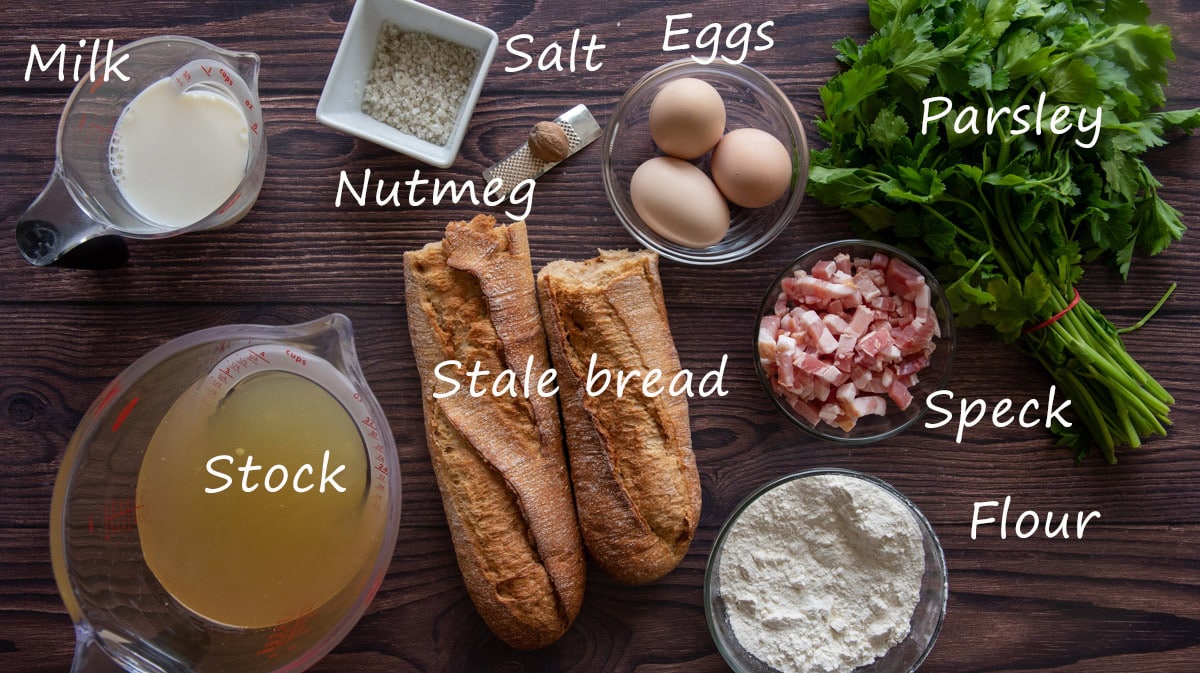
30. Red Pepper Flakes (peperoncino):
Flavor Profile: Red pepper flakes are emblematic of a bold flavor in the Italian culinary palette. These tiny shards of dried chili carry a peppery flavor and a pungent flavor, bringing a touch of heat to dishes. They boast a stronger flavor, particularly noticeable when used in abundance. Their aromatic flavor doesn't lean towards the sweet or floral side; instead, it’s the very embodiment of robust flavor.
Pairs Well With: Red pepper flakes have a natural affinity with many ingredients used in Italian cooking. They pair seamlessly with aromatic herbs such as oregano, basil, and rosemary. Given their peppery and robust nature, they also complement earthy flavors like those found in mushrooms or olives, and they can provide a great counterbalance to the sweetness of certain ingredients, like caramelized onions.
Italian Recipes:
- Arrabbiata Sauce: A classic Roman sauce, its name translates to "angry" – a fitting description given its spicy nature from the red pepper flakes. This sauce pairs beautifully with pasta and embodies the essence of Italian simplicity with its bold flavor.
- Spaghetti Aglio e Olio: A quintessential Italian dish, it uses garlic, olive oil, and often a sprinkle of red pepper flakes to give it a gentle kick.
- Pizza Diavola: This pizza is topped with spicy salami and often a generous sprinkle of red pepper flakes to give it a pungent flavor.
- Broccoli Rabe with Red Pepper Flakes: A popular southern Italian side dish where broccoli rabe's bitterness meets the chili's bold and robust flavor, often sautéed with garlic and olive oil.
- Calabrian Chili Paste: Originating from Calabria, this spicy paste is made primarily from red pepper flakes and is used to flavor various dishes, from pasta to meats.
31. Rosemary (rosamarino):
Flavor Profile: Rosemary is one of the aromatic herbs that stands out with a bold flavor. This evergreen herb has an earthy flavor with hints of peppery flavor, making it one of the fragrant herbs with a pungent flavor. While its aroma has floral undertones, its taste leans more towards the robust flavor side.
Pairs Well With: The aromatic flavor of rosemary marries well with a variety of ingredients. It complements the earthy flavor of root vegetables, lamb, pork, and chicken, and pairs harmoniously with other aromatic herbs such as thyme and sage. It’s a versatile herb that can be integrated into both savory and sweet dishes, offering a contrast to sweet flavors, such as when it's used in lemon and rosemary cakes or cookies.
Italian Recipes:
- Focaccia al Rosmarino: This Italian flatbread is often sprinkled with fresh rosemary leaves and coarse salt, resulting in a savory and delightful aromatic flavor.
- Lamb Chops Scottadito: These are often seasoned with rosemary, delivering a bold flavor and earthy undertones to the meat.
- Rosemary Roasted Potatoes: A simple yet classic side dish, potatoes take on an aromatic and robust flavor when roasted with rosemary.
- Tuscan White Bean Soup: This hearty soup often includes rosemary, which infuses the dish with its earthy and fragrant aroma.
- Pollo al Rosmarino: A rustic Italian chicken dish that utilizes rosemary as its primary herb, imparting a stronger flavor to the poultry.

32. Saffron (zafferano):
Flavor Profile: Saffron, derived from the dried stigmas of the crocus flower, is one of the world's most prized spices. Its flavor profiles are quite unique; it has a slightly earthy flavor paired with a sweet flavor, resulting in a beautifully complex taste. Its aromatic flavor is evident but not overpowering, with subtle floral undertones and a hint of bitter taste.
Pairs Well With: Saffron is a versatile herb that can enhance both savory and sweet dishes. Its aromatic flavor pairs beautifully with rice, seafood, and poultry. The fragrant herb complements the flavors of aromatic herbs such as rosemary and thyme, and its sweet notes can elevate desserts and pastries.
Italian Recipes:
- Risotto alla Milanese: A classic Italian dish, this creamy rice dish owes its golden hue and aromatic flavor to saffron. The delicate flavors of the saffron shine through, making it a standout dish in Lombard cuisine.
- Fiorilli fritti with saffron (fried zucchini flower with saffron): Saffron in the fried zucchini flower batter imparts a delicate floral aroma that elevates and complements the natural sweetness of the blossoms.
- Zuppa di Cozze al Zafferano: A luxurious mussel soup often enriched with saffron, giving it both color and a unique depth of flavor.
- Pasta with Saffron and Seafood: Many coastal regions in Italy utilize saffron in their seafood pasta dishes, enhancing the flavors of the sea with its aromatic and slightly bitter taste.
- Saffron Biscotti: The sweet flavor of saffron can be showcased in these twice-baked cookies, often paired with almonds or citrus.
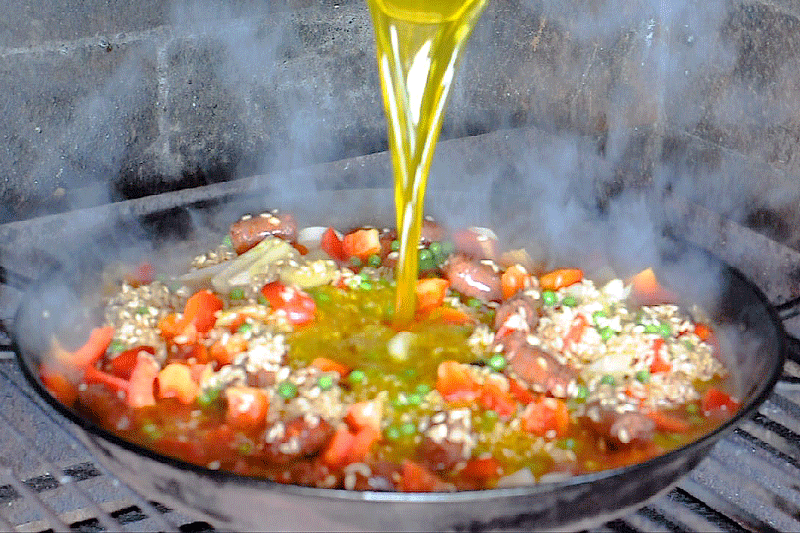
33. Sage (salvia):
Flavor Profile: Sage possesses a flavor profile that is robust and distinct. This aromatic herb has an earthy flavor combined with subtle peppery undertones. It is characterized by a pungent flavor with a hint of bitterness. Its fragrant aroma and bold flavor make it an unmistakable addition to many dishes.
Pairs Well With: Sage is a versatile herb in Italian cooking. It pairs exceptionally well with pork, beef, and poultry. The robust flavor complements the richness of meats, cheeses, and buttery sauces. Additionally, it goes hand in hand with other aromatic herbs like rosemary and thyme, enhancing the earthy notes of various dishes.
Italian Recipes:
- Saltimbocca alla Romana: A classic Roman dish, it features veal cutlets wrapped with prosciutto and sage, then pan-fried until golden.
- Butter and Sage Sauce (Burro e Salvia): A simple yet flavorful sauce made by melting butter with sage leaves until it becomes aromatic and slightly nutty. It's typically served over pasta, especially gnocchi or ravioli.
- Fagioli all'Uccelletto: A Tuscan bean dish where sage plays a starring role, combined with garlic and tomatoes.
- Sage Fritters (Frittelle di Salvia): Fresh sage leaves dipped in a light batter and deep-fried until crisp.
- Roasted Pork with Sage: A preparation where pork roasts or cuts are generously seasoned with sage, garlic, and other aromatic herbs, producing a meal with a bold and pungent flavor profile.
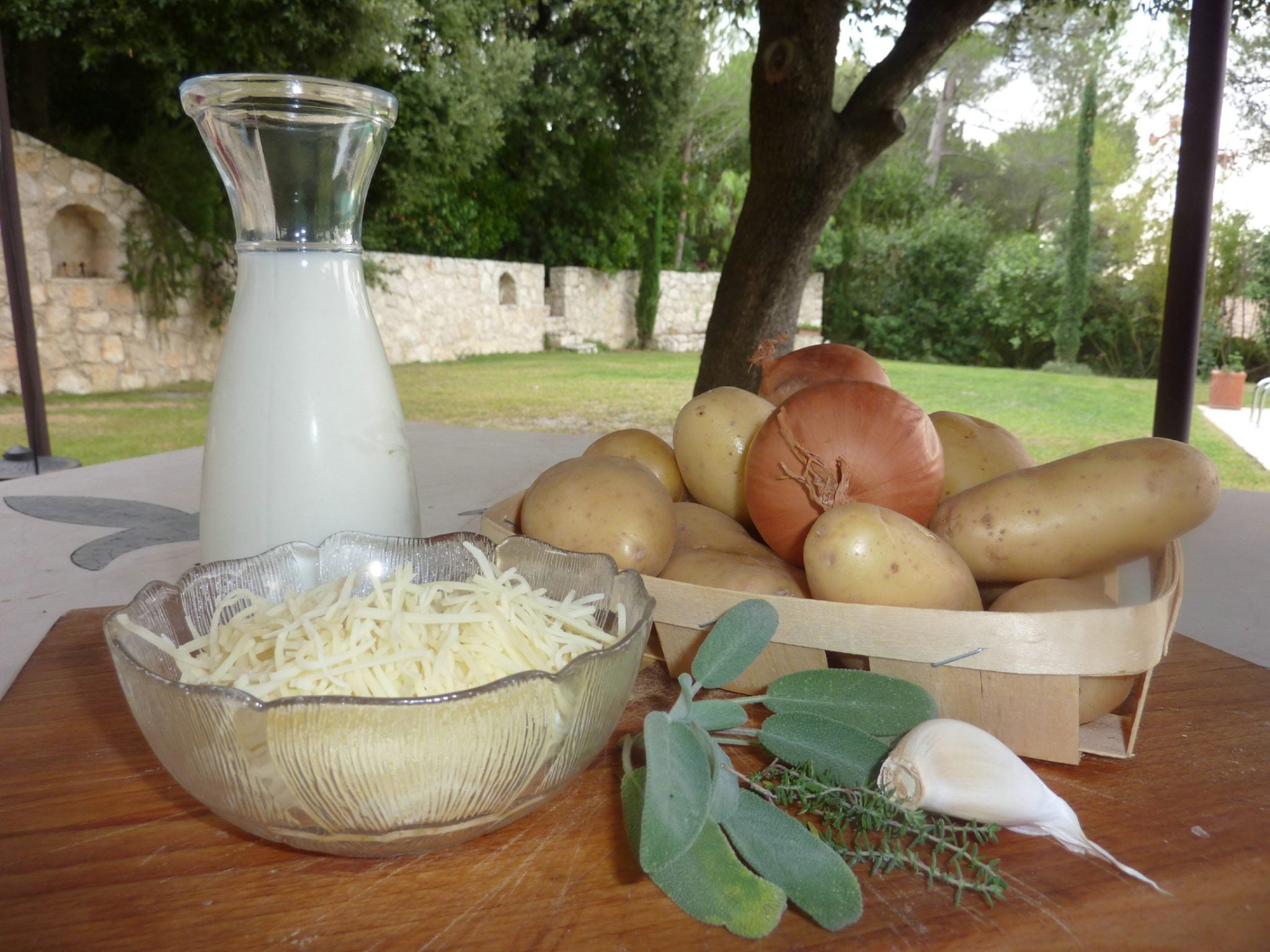
34. Thyme (Timo):
Flavor Profile: Thyme, recognized as a fragrant herb, has a complex flavor profile that offers an earthy flavor combined with subtle floral undertones. Its aroma is distinctively aromatic, making it one of the most cherished aromatic herbs in many cuisines, including Italian. Its flavor can range from slightly sweet to having a hint of peppery flavor, with some thyme varieties even leaning towards a pungent flavor.
Pairs Well With: As a versatile herb, thyme complements a wide array of ingredients. Italian cuisine's earthy flavor harmonizes beautifully with tomatoes, olives, and various meats, especially lamb and chicken. It also melds well with other aromatic herbs like rosemary, oregano, and sage, creating a robust flavor profile when used in combination.
Italian Recipes:
- Osso Buco with Thyme: The aromatic flavor of thyme enriches the savory depth of this traditional braised veal dish, adding layers of earthy flavor to the sauce.
- Thyme and Garlic Roasted Potatoes: A side dish where the pungent flavor of garlic marries the fragrant herb's earthy notes, resulting in a harmonious blend of tastes.
- Tomato and Thyme Bruschetta: Fresh tomatoes, with their sweet flavor, are enhanced by the peppery flavor of thyme, providing a refreshing twist to the classic bruschetta.
- Lemon Thyme Risotto: Combining the aromatic flavor of thyme with the zest of lemon creates a dish with a balance of earthy flavor and tangy brightness.
- Roasted Chicken with Thyme and Lemon: The chicken, imbued with a robust flavor from the thyme, becomes an epitome of rustic Italian cooking when roasted to perfection.
35. White Pepper:
Flavor Profile: White pepper, derived from the same plant as black pepper but processed differently, presents a more delicate flavor profile. It boasts an earthy flavor, underscored by subtle floral notes. Its peppery flavor is less intense than its black counterpart, but it has a distinct pungent flavor that can often lean towards a bitter taste. Some connoisseurs even detect a hint of sweetness in white pepper, distinguishing it from other spices.
Pairs Well With: Due to its more delicate aromatic flavor, white pepper is a versatile herb-like spice in Italian cuisine, pairing exceptionally well with creamy sauces, light-colored pastas, and seafood dishes. It complements aromatic herbs such as tarragon, parsley, and chives without overwhelming them. In soups and risottos, its pungent flavor provides a surprising depth without the robust flavor of black pepper.
Italian Recipes:
- Fettuccine Alfredo: White pepper's subtle peppery flavor is a classic choice for this creamy pasta dish, enhancing the sauce without overpowering it.
- Seafood Risotto: The earthy flavor of white pepper accentuates the seafood's fresh taste, adding complexity to the dish.
- Potato Leek Soup (Vichyssoise): This creamy soup is traditionally seasoned with white pepper, giving it an aromatic flavor that balances the earthiness of the potatoes and leeks.
- Veal Scallopini: Delicate veal slices benefit from white pepper's gentle pungent flavor, heightening the meat's natural flavors.
- Panna Cotta: This creamy dessert occasionally gets a hint of white pepper, lending a surprising depth and slight peppery flavor that contrasts the sweet flavor beautifully.
36. Wild Fennel (Finocchio selvatico):
Flavor Profile: Wild fennel, distinct from the cultivated bulb variety, is a fragrant herb characterized predominantly by its aromatic flavor. Known for its anise-like flavor, it carries more pronounced and robust notes than regular fennel. The leaves and seeds of wild fennel present a sweet flavor, but when its stems are chewed upon, a stronger flavor with a hint of bitter taste can be identified.
Pairs Well With: Wild fennel is a versatile herb in Italian cuisine due to its aromatic and anise-like flavor. It pairs beautifully with pork, fish, and poultry and harmonizes well with other aromatic herbs like rosemary and thyme. Its sweet flavor nuances blend seamlessly with citrus fruits, especially in Mediterranean salads.
Italian Recipes:
- Pork dishes: Dishes like Porchetta, a savory pork roast seasoned with wild fennel, celebrate the herb's bold flavor, which complements the richness of the pork.
- Fennel and Orange Salad: This refreshing salad combines the sweet flavor of oranges with the aromatic flavor of wild fennel.
- Sardines with Wild Fennel: A classic Sicilian dish, where sardines are cooked with wild fennel, pine nuts, and raisins, offering an earthy flavor with sweet and aromatic undertones.
- Pasta con le Sarde: A traditional Sicilian pasta dish that combines sardines, wild fennel, and other ingredients, showcasing the herb's robust flavor amidst other strong components.
- Legumi con finocchietto (pulses on an open fire): Wild fennel infuses pulse stews with a subtle anise-like flavor, complementing the earthiness of the legumes and adding aromatic depth.
- Fennel Liqueur (Finocchietto): An aromatic spirit infused with wild fennel, often enjoyed as a digestive in parts of Italy.

Using Fresh vs. Dried Herbs
Whether fresh or dried, herbs play a quintessential role in cooking, offering dishes a depth of flavor and aromatic allure. However, understanding the difference between fresh and dried herbs is crucial for achieving culinary success. Here's a closer look:
The difference in Flavor Intensity:
- Fresh Herbs: Fresh herbs often have a milder, more delicate flavor profile compared to their dried counterparts. Their aroma is more immediate, releasing fragrant oils when chopped, crushed, or even slightly bruised. The freshness brings a bright, vibrant taste ideal for garnishing or dishes requiring a subtle touch of herbal flavor.
- Dried Herbs: Drying herbs concentrate their flavors, making them more potent and intense. The drying process can enhance certain aromatic compounds while muting others. Therefore, dried herbs have a stronger flavor profile, and less quantity is needed when substituting them for fresh herbs. A general rule of thumb is to use one-third of the amount of dried herbs as you would fresh.
When to Use Each Type:
- Fresh Herbs: Best used when the dish requires a burst of fresh flavor, such as in salads, pestos, or garnish. They're also optimal for recipes with shorter cooking times, as prolonged heat can diminish their flavor.
- Dried Herbs: Suited for dishes with longer cooking times, like stews, soups, and sauces. Their intensified flavor can withstand and permeate throughout prolonged cooking. They're also preferred when the herb primarily infuses a dish with depth rather than providing a fresh note.
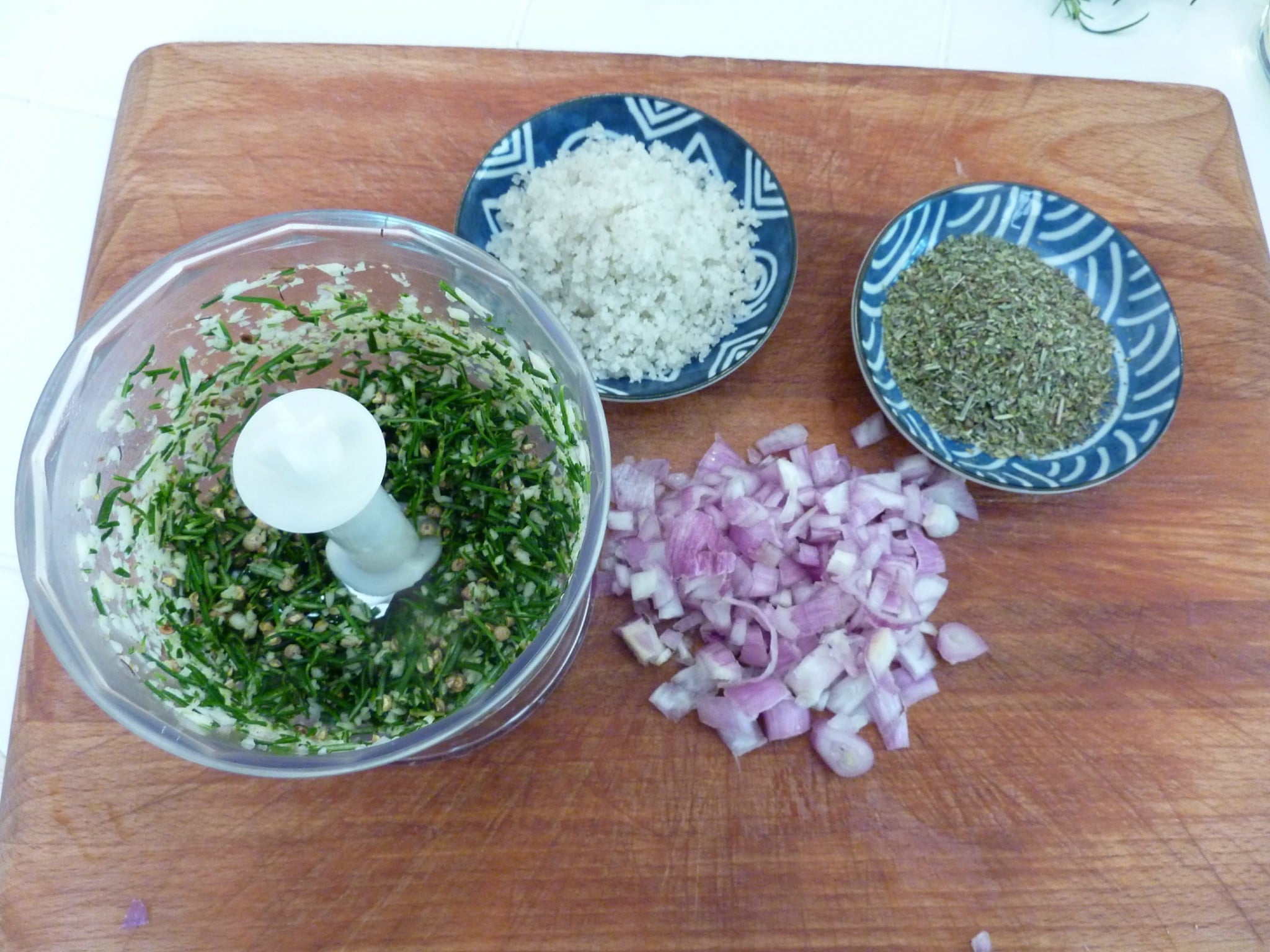
Tips on Storing and Preserving:
Fresh Herbs:
- Short-term: Wash and pat dry fresh herbs, then loosely wrap them in kitchen paper and place them in an airtight container in the fridge. The kitchen paper will absorb any moisture that will form later
- Long-term: To prolong their shelf life, you can chop them and freeze them in ice cube trays with olive oil or water. Once frozen, transfer the cubes to a freezer bag for future use.
Dried Herbs:
- Short-term: Keep in a cool, dark place in airtight containers. Avoid storing near heat sources like the stove, as this can cause them to lose flavor more rapidly.
- Long-term: Dried herbs do have a shelf life. While they might not spoil, they lose flavor potency over time. It's advisable to replace dried herbs every year or when they no longer emit a strong aroma when crushed.
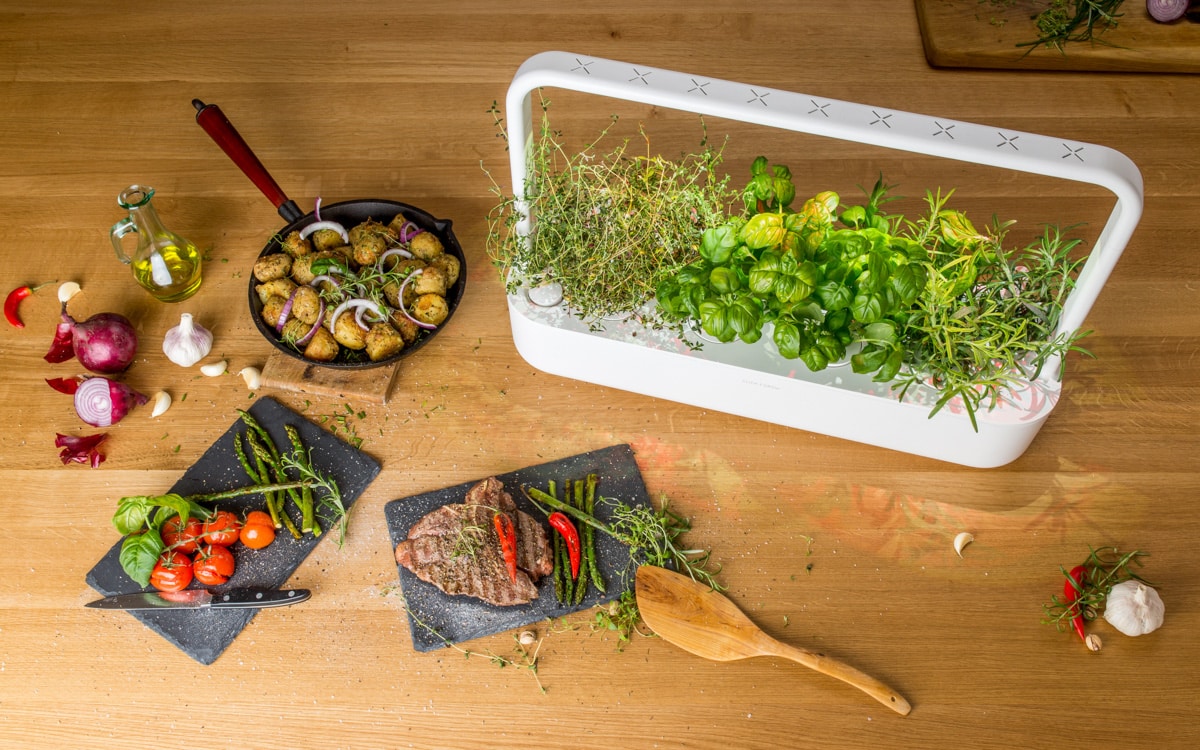
Growing Your Own Italian Herb Garden
Italian cuisine's charm often lies in its rustic simplicity, and nothing exemplifies this better than the use of fresh herbs.
Growing your own Italian herb garden brings Italy's heart to your kitchen and offers myriad benefits and pleasures.
Benefits of growing your fresh herbs:
- Enhanced Flavor: Freshly picked herbs have a fuller and more aromatic flavor than store-bought ones. They elevate dishes with a brighter and more distinct taste.
- Cost-Effective: Growing herbs can be more economical in the long run than regularly buying them.
- Chemical-Free: When you grow your own, you have control over your plants' environment, ensuring they're free from harmful pesticides and chemicals.
- Availability: Fresh herbs are always available whatever you are cooking
- Therapeutic: The act of gardening itself is therapeutic. Tending to plants, watching them grow, and being in touch with nature can be a source of relaxation and joy.
Growing herbs the easy way
For many of us, having our own garden to cultivate and harvest is a cherished dream.
But space, climate, and skill limitations often keep that dream just out of reach.
Imagine having a garden right in your own kitchen that takes care of itself, almost magically growing the plants you love, and ensuring they get exactly what they need to thrive.
Sounds too good to be true? Well, hold onto your gardening gloves, because I've stumbled upon a system that promises just that!
This September, I'm embarking on an exciting gardening adventure. I've recently discovered a system named "Click and Grow," and I'll be putting it to the test. By October, I'll be able to share my personal experience, let you know how it fared, and most importantly, if I'm truly satisfied with the results.
Here's a snapshot of what Click and Grow promises:
- Self-Sustaining Indoor Gardens: Space is no longer a constraint! Whether you have a sprawling kitchen or a cozy nook, there's a Click and Grow model for you.
- Diverse Plant Pods: You have the choice of over 70 different plant pods. The options are vast and varied from luscious tomatoes to aromatic herbs and vibrant flowers.
- Smart Systems: Forget the guesswork. Every garden comes with an automated watering, lighting, and nutrient system. This means your plants always get the perfect amount of care, without any of the hassle.
- Customizable Aesthetics: Choose from three appealing colors to ensure your indoor garden complements your kitchen decor.
- Easy Start: Each set is equipped with a lamp, a user-friendly quick start guide, and complimentary plant pods tailored to the garden's size.
- App Assistance: Feel like a novice? The Click and Grow app is designed to transform you into a bona fide plant expert, guiding you every step of the way.
- Organic and Safe: The best part? You can grow pesticide-free fresh food and flowers throughout the year, right in the comfort of your home.
With all these features, Click and Grow seems like a dream come true for both seasoned gardeners and those just starting out.
Stay tuned as I dive deep into this system in September, and by next month, I'll share all my findings with you.
You can now read the post: Italian Fresh Herbs In Your Kitchen With Click and Grow

Herbs and spices throughout history
Spices and aromatic herbs have always played an integral role in human history.
From the ancient Greeks to medieval Europeans, these potent natural elements served as both culinary enhancers and agents of health, superstition, and ritual.
Ancient Greece
In ancient Greece, herbs were central to cuisine, rituals, and funerary practices.
Sophocles referred to them as "artumata", which translates to "condiments of nutrition".
Greek society associated spices and herbs, such as oregano, mint, and rosemary, with sacred events and divine entities.
For instance, myrtle was affiliated with Aphrodite, laurel with Apollo, and marjoram symbolized sacrifice.
Interestingly, some common herbs today, like parsley and basil, were used more for aesthetics and practical purposes, such as repelling insects, rather than culinary endeavors.
In this Hellenic world, onions stood out. Esteemed by Plato but detested by Pythagoras due to their believed aphrodisiac properties, they were a frequent presence in classical banquets.
Garlic, conversely, was a less favored ingredient.
Its reputed ability to ward off evil spirits has persisted, with garlic still being a protective symbol in contemporary Greek folklore.

Herbs and witches
Moving forward in time, in medieval Europe, women, renowned as the first pharmacologists, became stewards of herbal knowledge.
They cultivated, collected, and utilized these plants for medicinal purposes.
However, as their influence grew, institutions became apprehensive.
These knowledgeable women, once called "chafarderas" (gossips), were later stigmatized as witches.
Accused of harnessing supernatural powers, they became scapegoats for societal misfortunes.
This wasn't just about superstition.
Witch healers used analgesics, sedatives, digestive medicines, and other preparations to lessen childbirth pains, despite the Church's contrary position, according to which, because of original sin, women had to give birth in pain.
The Church's persecution reached its zenith between the 15th and 17th centuries, decimating the ranks of these herbalist women, and, unfortunately, a lot of their knowledge was lost in the process.
Their knowledge, however, didn’t go unnoticed by all.
The Swiss physician Paracelsus famously said he learned more from these rustic healers than from renowned ancient scholars like Hippocrates and Galen.

Medieval spices and Renaissance herbs
Medieval aristocracy favored meat over vegetables, viewing the latter as food for the peasantry but during this period, the cultural perception of vegetables and herbs took a turn.
During the Crusades, closer interactions with the Orient led to a surge in the spice trade, primarily driven by Italian merchants.
Medieval beliefs touted the "heat" of spices as aids for digestion, resulting in their liberal use in meals and wines.
Additionally, spices became a symbol of wealth and status because of their high cost.
This association of spices with prestige persisted until the 16th century.
As the 16th century dawned, spices began to lose their allure as symbols of opulence, especially as they became more affordable.
The rich sought other ways to distinguish themselves.
France led the culinary renaissance, favoring native flavors like mushrooms, capers, and anchovies over exotic spices.
By the 17th century, even in Italy, chefs like Latini proposed dishes devoid of spices, favoring local herbs instead.
The kitchens of Italian courts became renowned across Europe, particularly for their lavish salads, generously seasoned with various aromatic herbs.

Herbs in Italian cuisine
In the realm of European culinary traditions, Italian gastronomy has stood out since medieval times for its generous use of garden products.
Beyond just vegetables, whether they were domesticated or foraged, aromatic herbs played a significant role.
These were harmoniously paired with valued spices, creating signature flavors.
Notable amongst these are marjoram and mint, the defining aromas of medieval and Renaissance Italian dishes.
By the Renaissance, as the first botanical gardens emerged and explorations of the New World began, there was a surge in the study of both local and foreign culinary and medicinal plants.
The 16th-century chef Scappi frequently incorporated them in his recipes.
Other staples included rosemary, parsley, sage, and dill, while basil, laurel, and catmint were used less often.
It's also worth noting that ingredients like mushrooms and truffles were showcased in Italian culinary literature with a straightforwardness not seen elsewhere.
This reflected the close-knit relationship and shared knowledge between rural and elite urban communities.
Highlighting this connection to garden produce is Giacomo Castelvetro's significant work written in 1614, "Brieve tale of all the roots of all the herbs and all the fruits."
Castelvetro, an Italian exile due to his Protestant beliefs, comprehensively examines Italian culinary practices, particularly vegetables and salads.
While celebrating the rich bounty of Italian gardens, Castelvetro expressed a yearning for these fresh ingredients amidst the meat-heavy diets of England, where he resided.
It's pivotal to recognize that throughout history, a blend of necessity and rich biodiversity fostered a deep-rooted, empirical understanding of herbs' culinary and medicinal values, especially among the lower social echelons across all Italian regions.
Even as recently as the mid-20th century, in rural societies, the tradition of using herbs for both nourishment and healing persisted, and wisdom often passed down matrilineally from mothers to daughters.
Source: Italian Cuisine: A Cultural History by Alberto Capatti, Massimo Montanari

More authentic Italian resources
If you are interested in learning more about Italian cooking, check out the article 77 traditional Italian ingredients and best brands with links to my favorite brands and a printable shopping list.
If you are growing your own Italian herbs and using them in your dishes, leave your comment below I would like to hear from you. You can find more delicious ideas if you FOLLOW ME on Facebook, YouTube, or sign up to my newsletter.





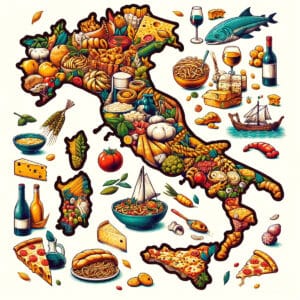
Leave a Reply